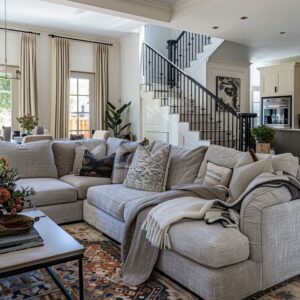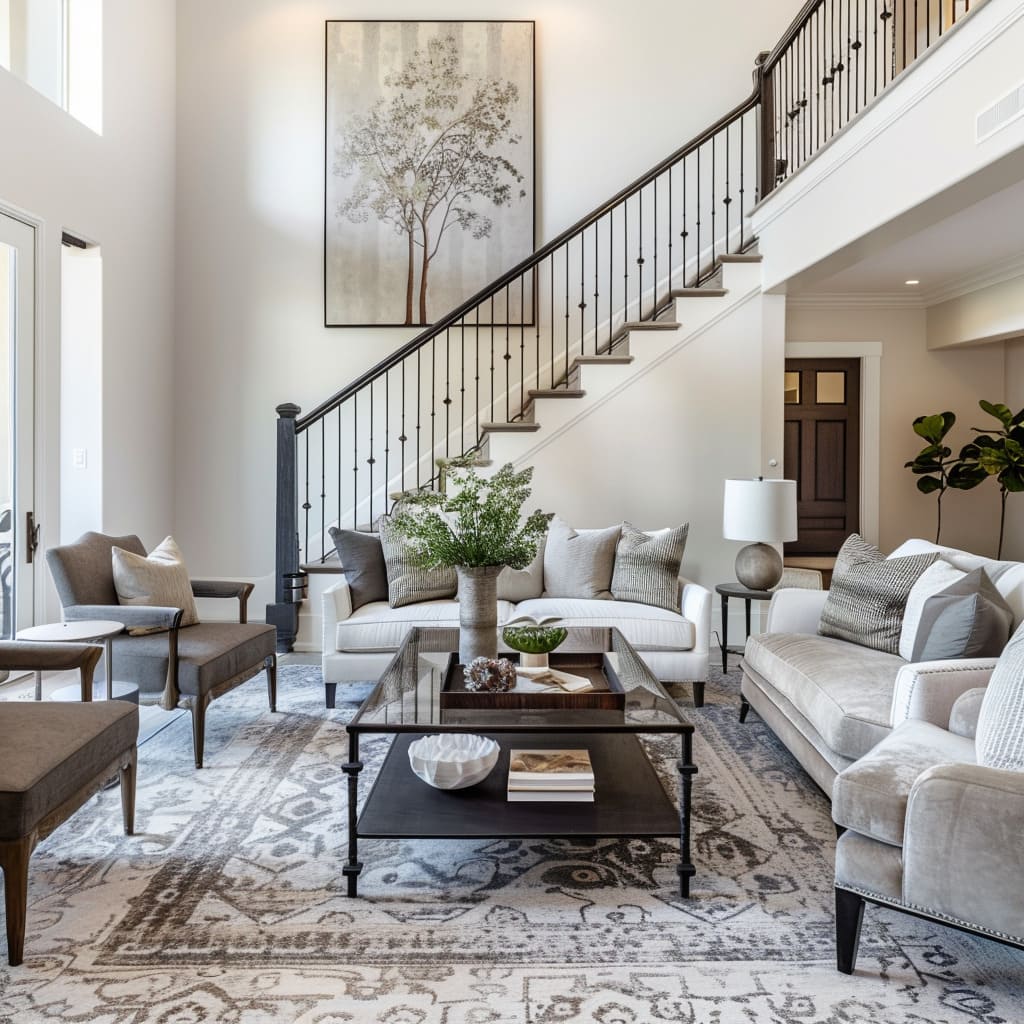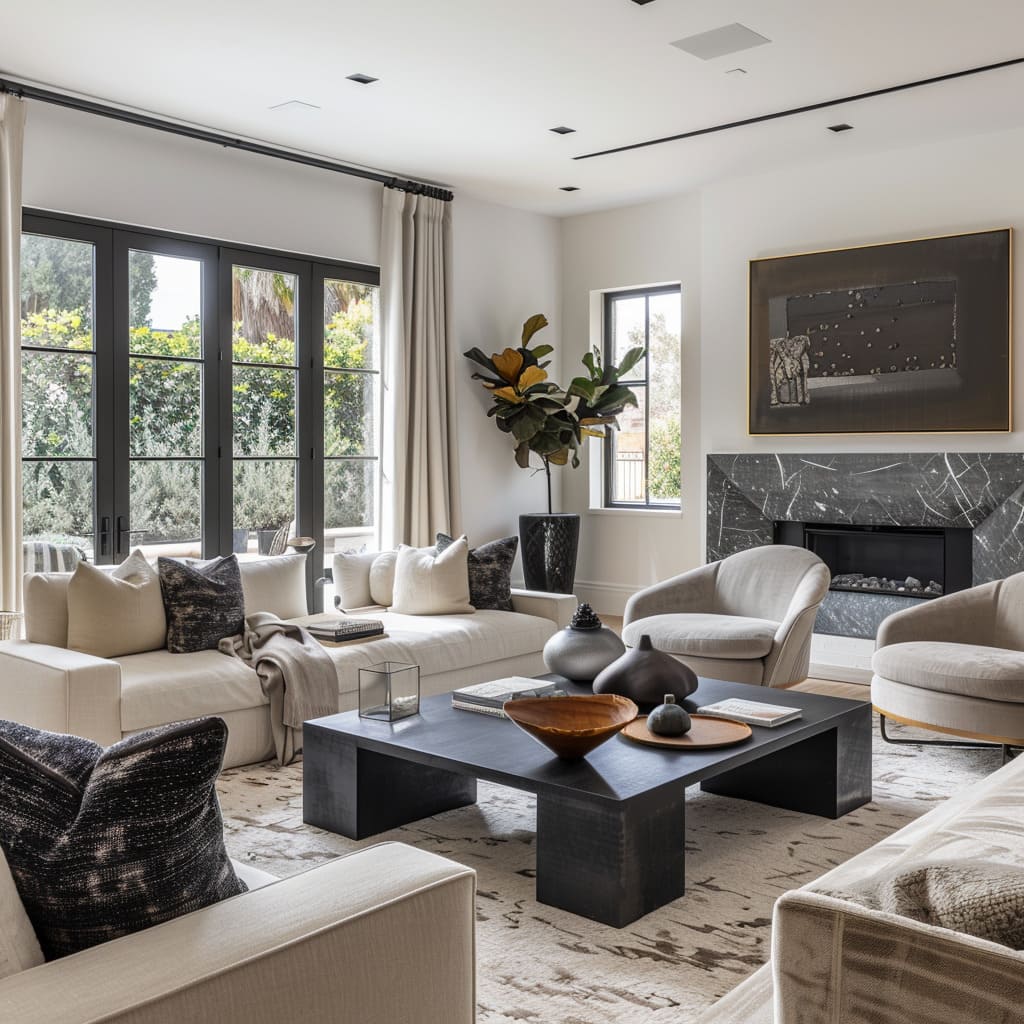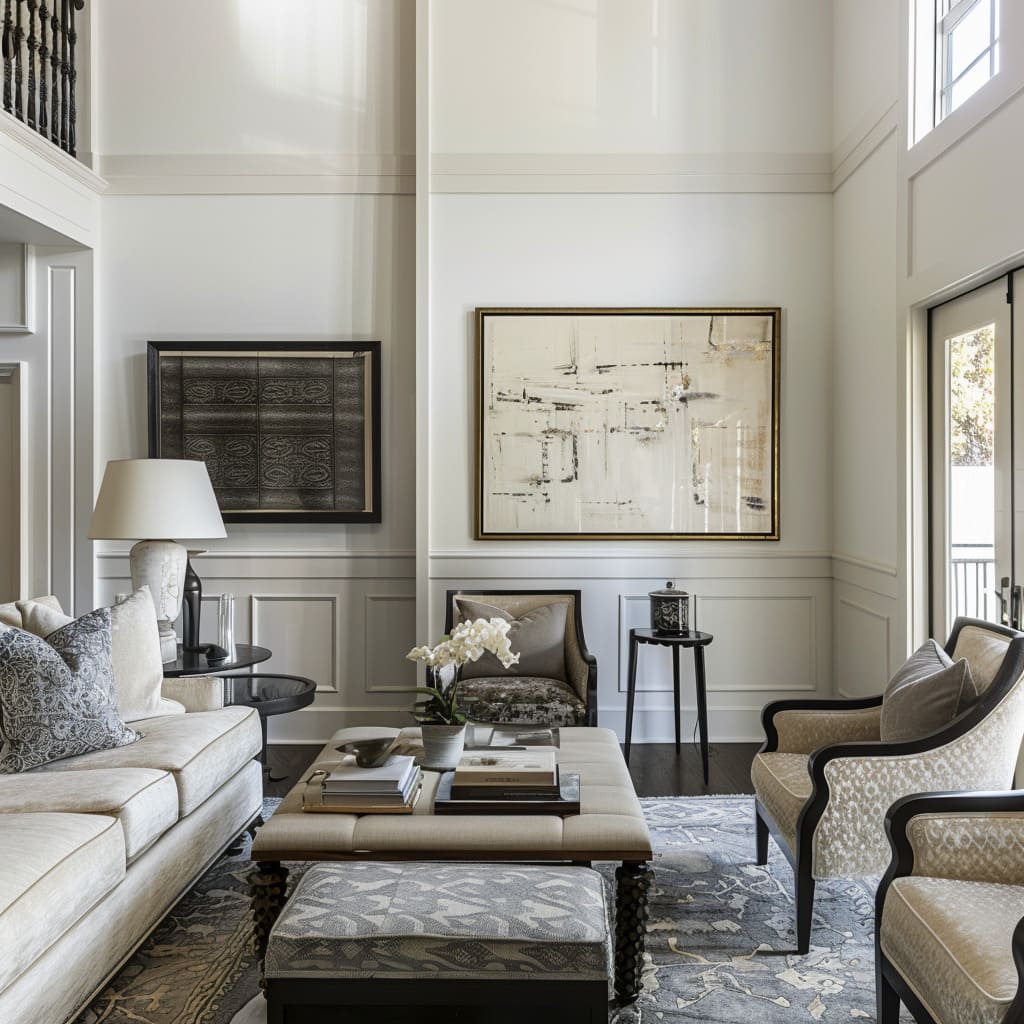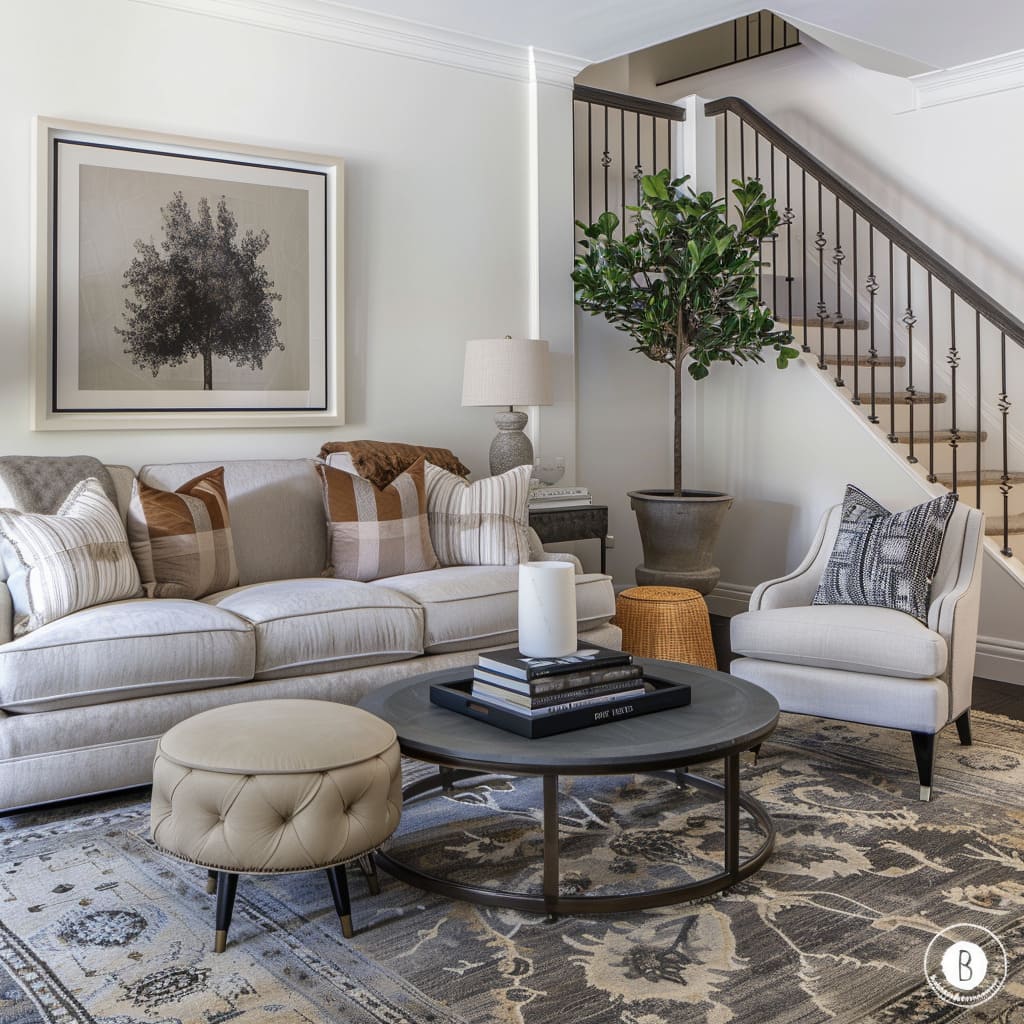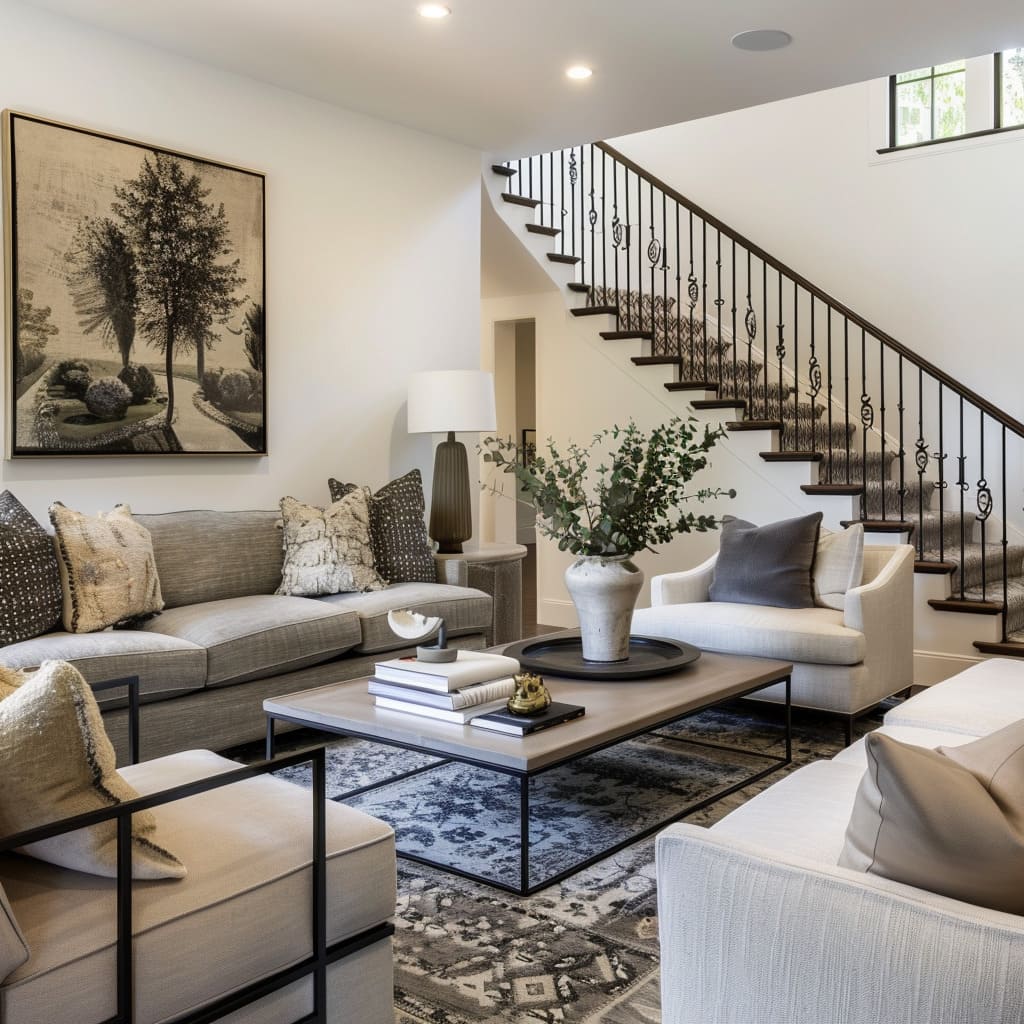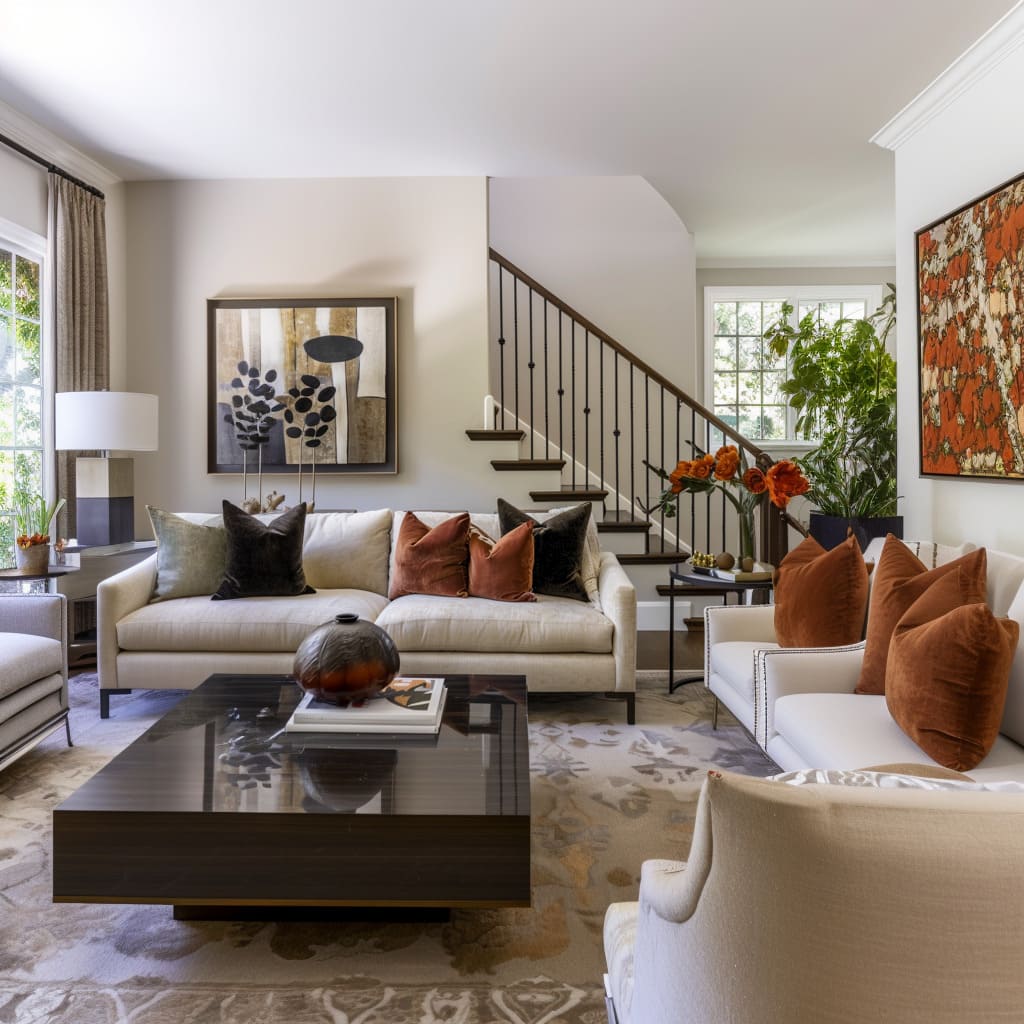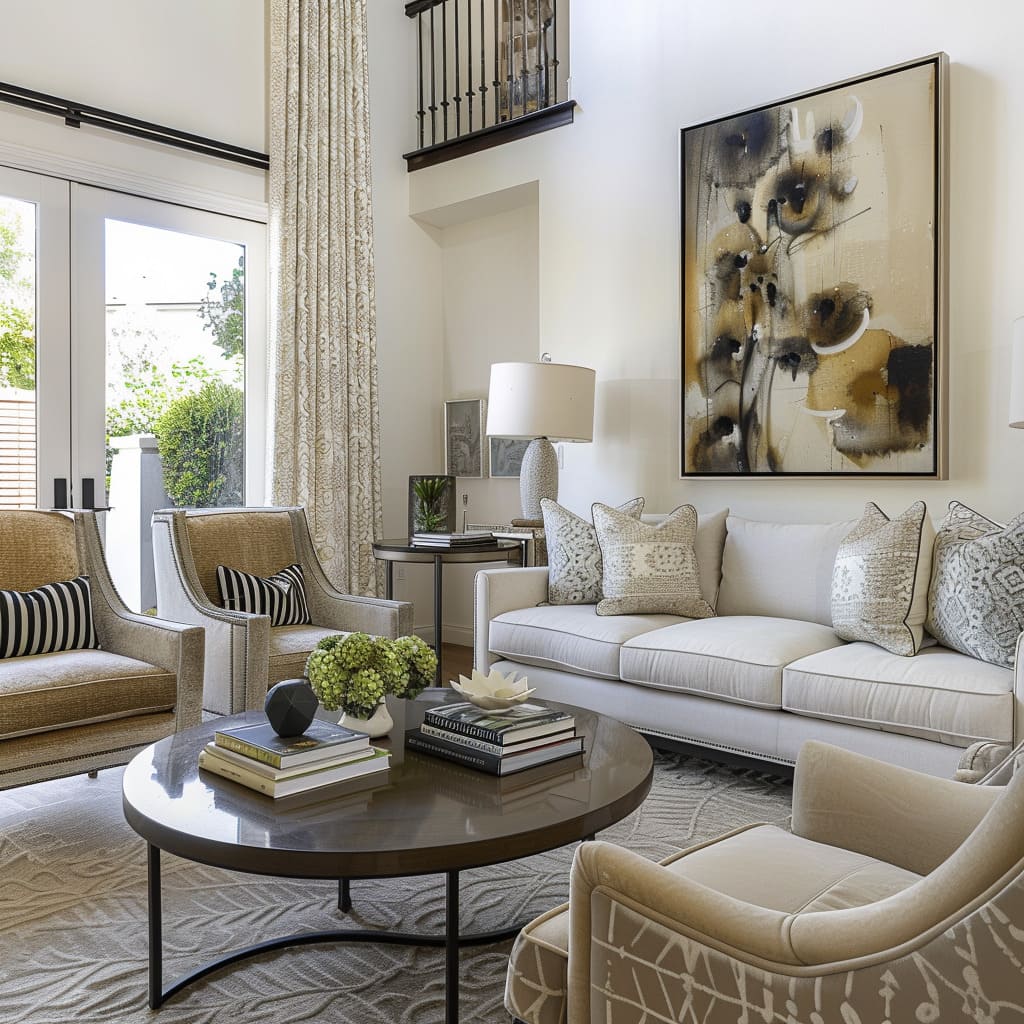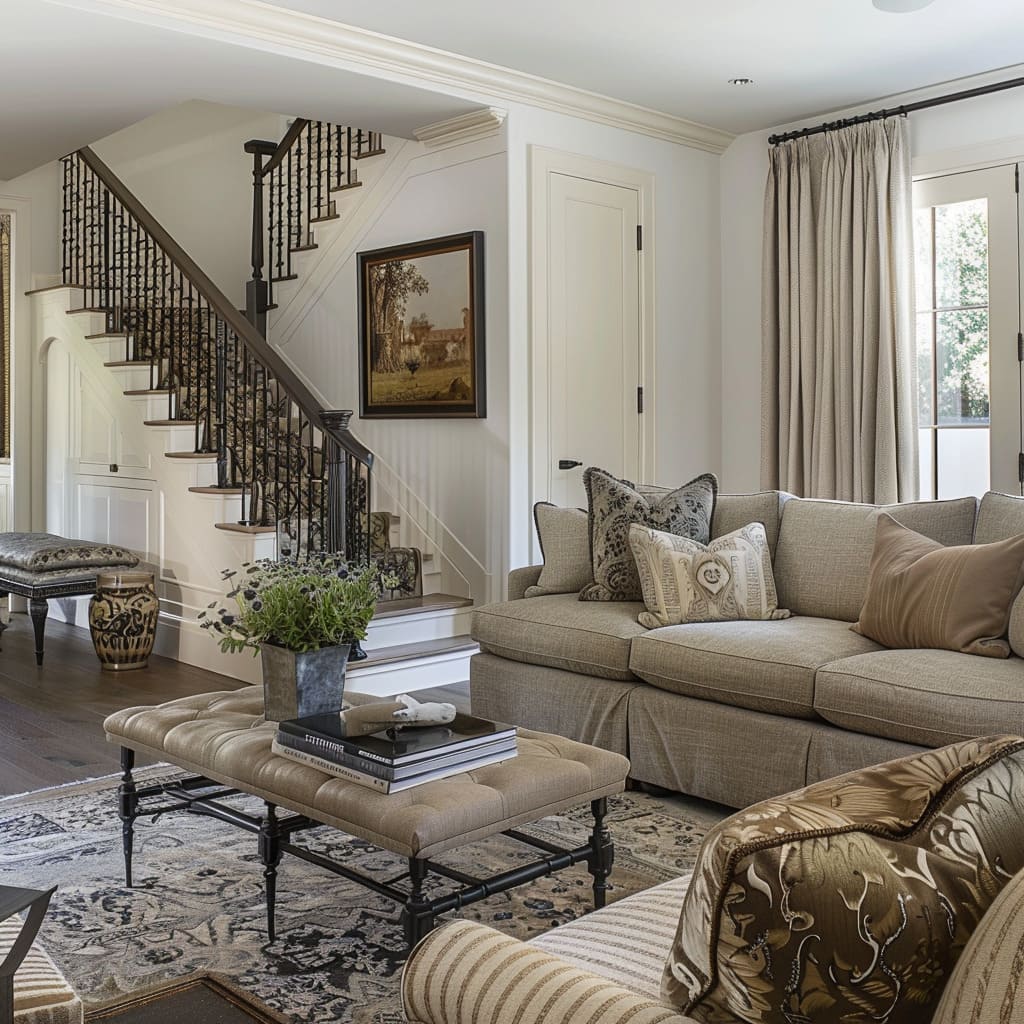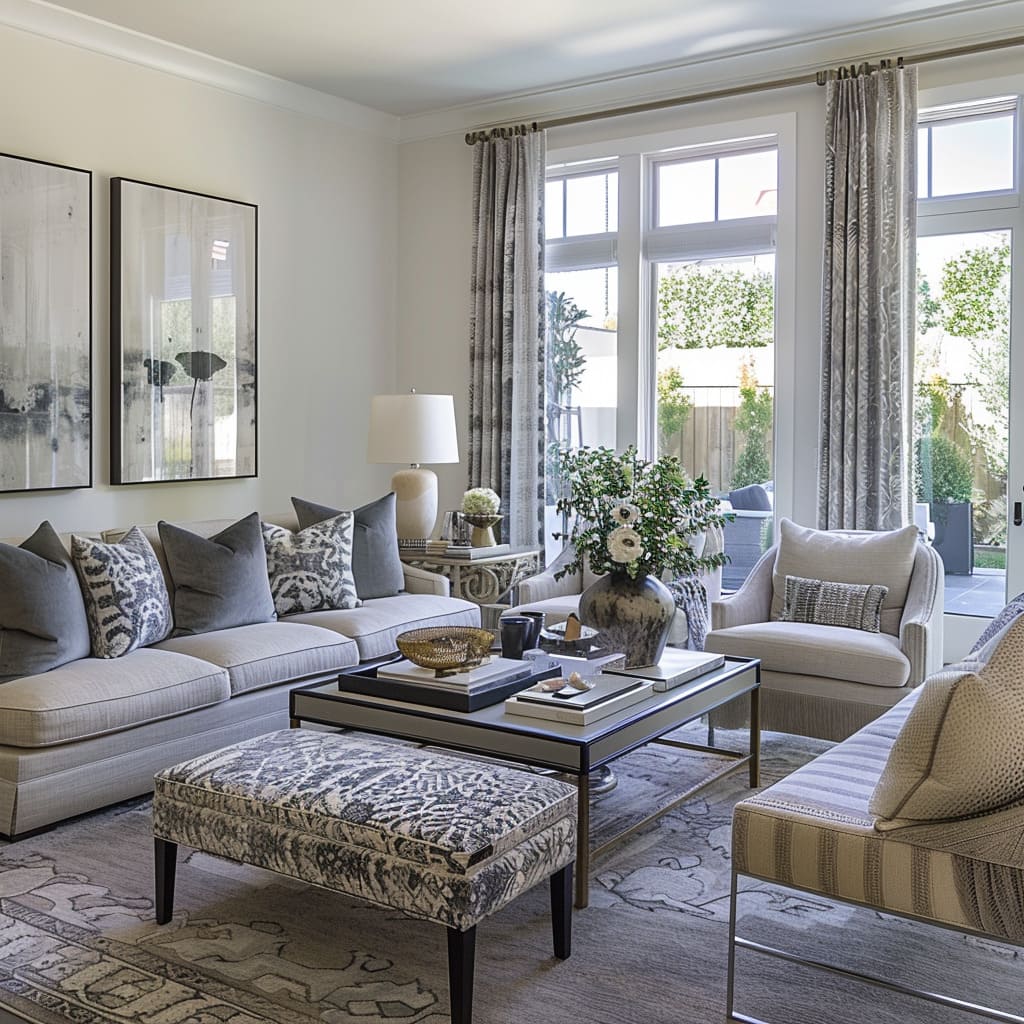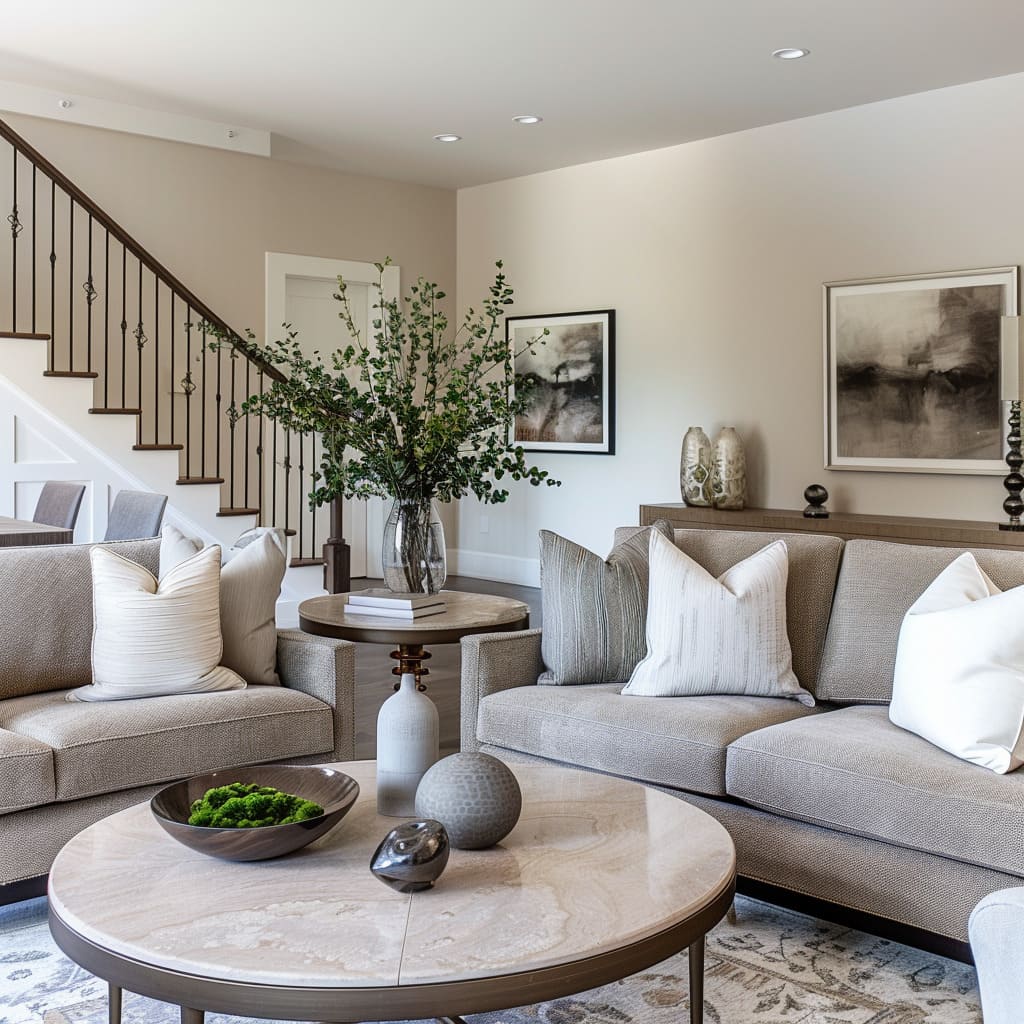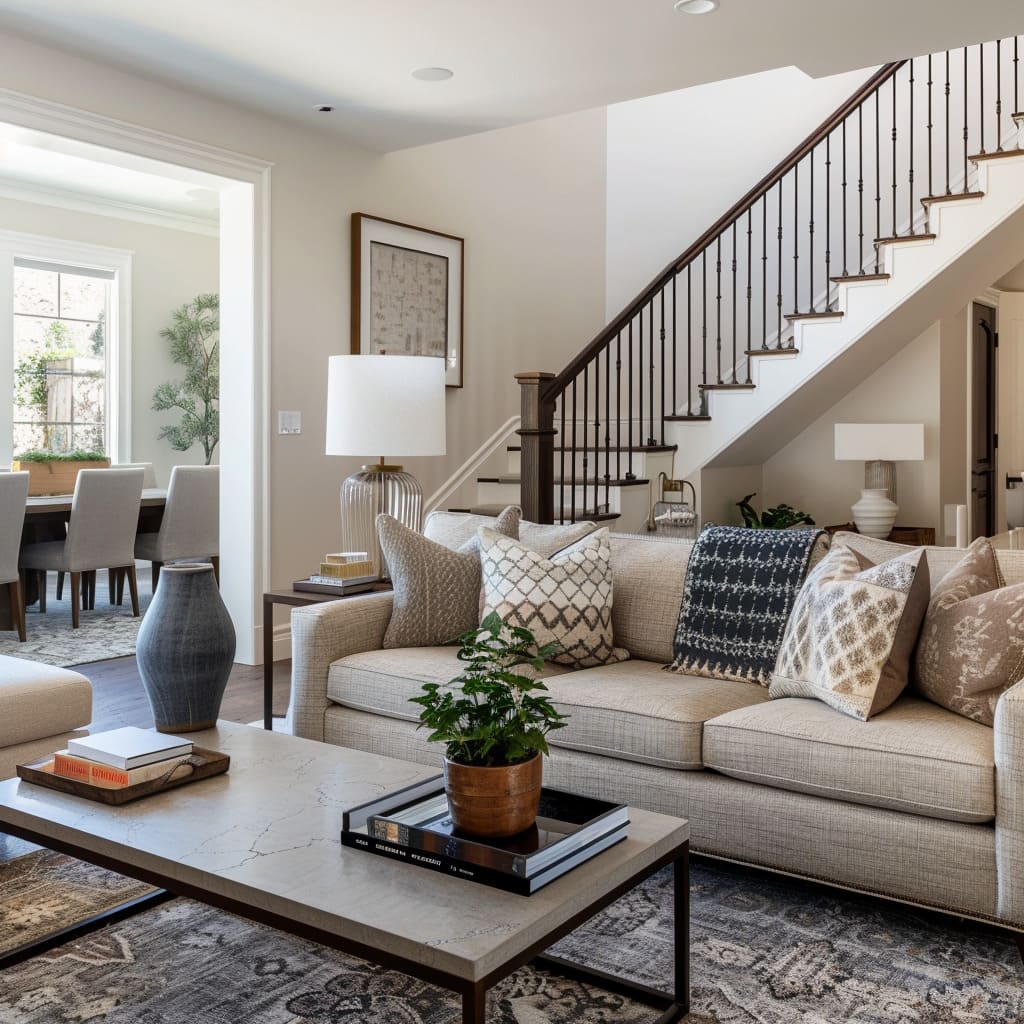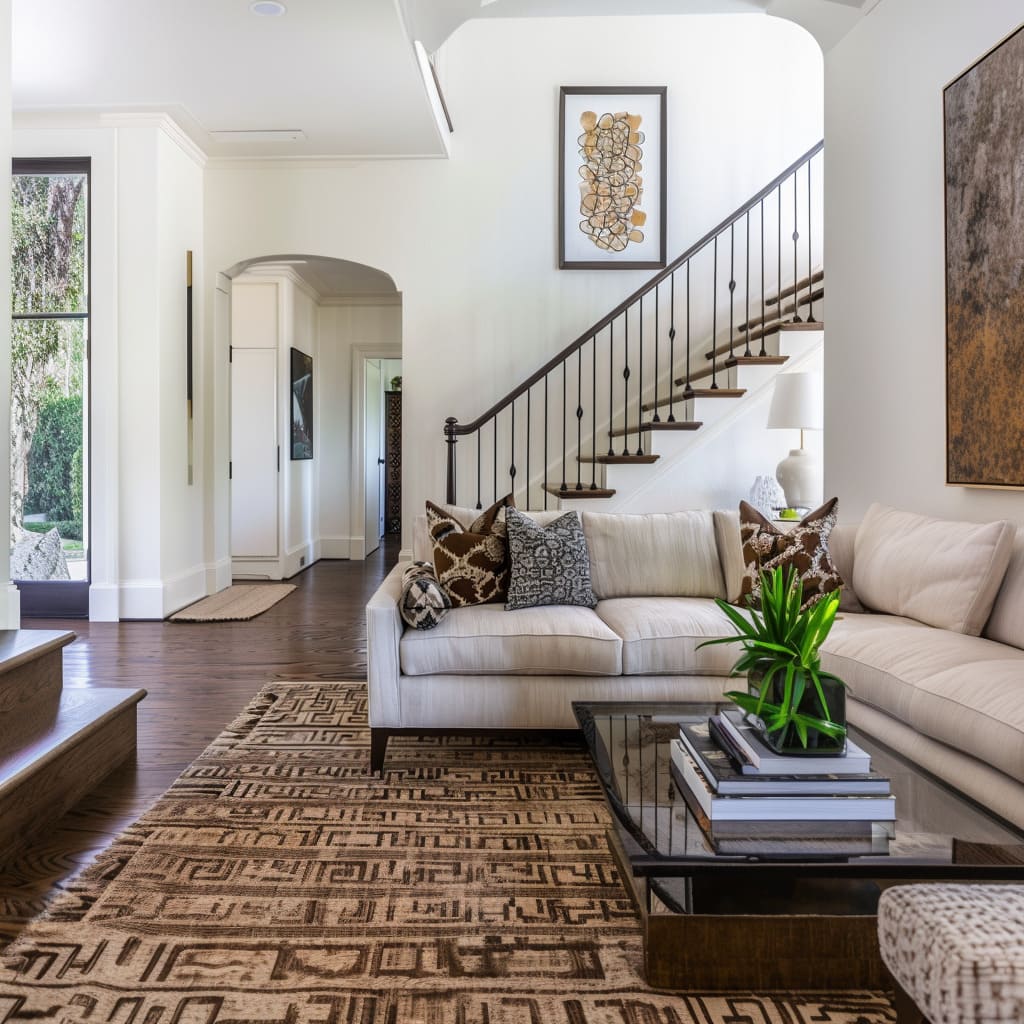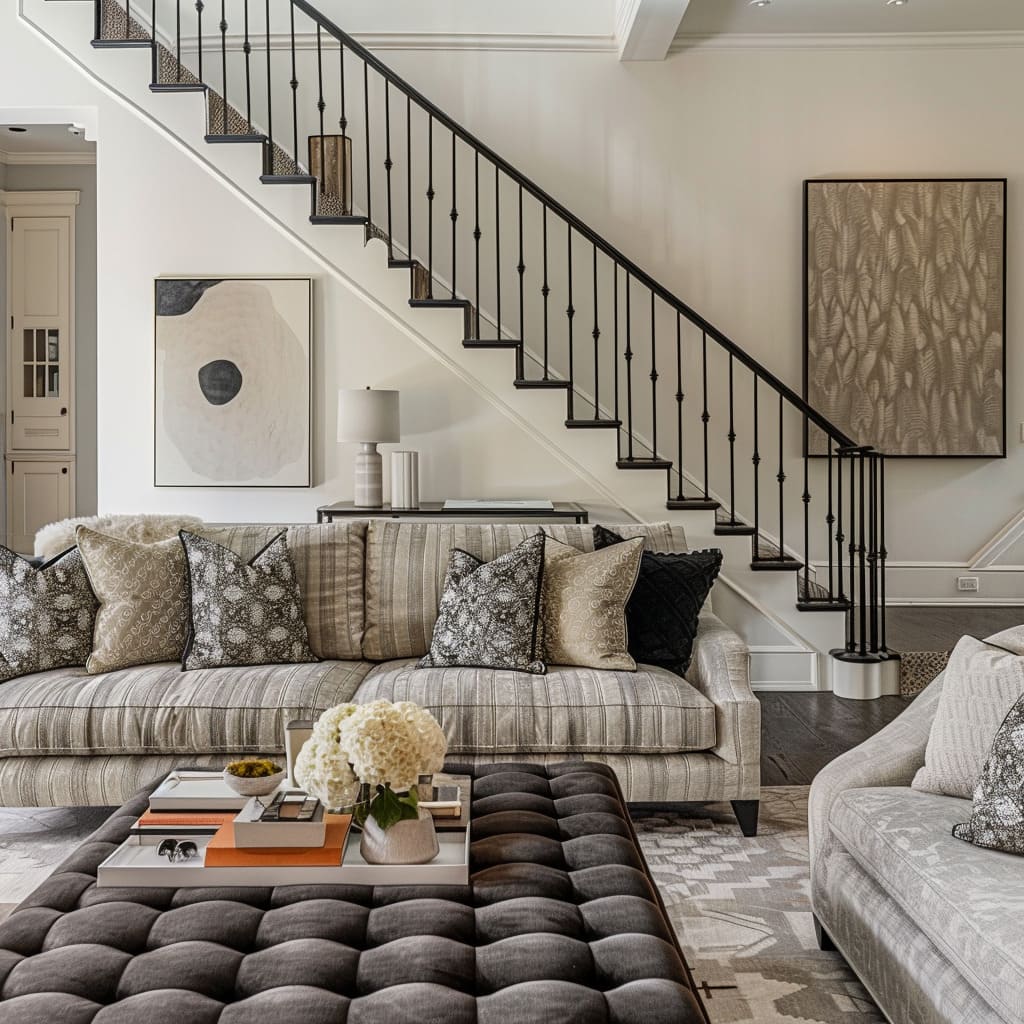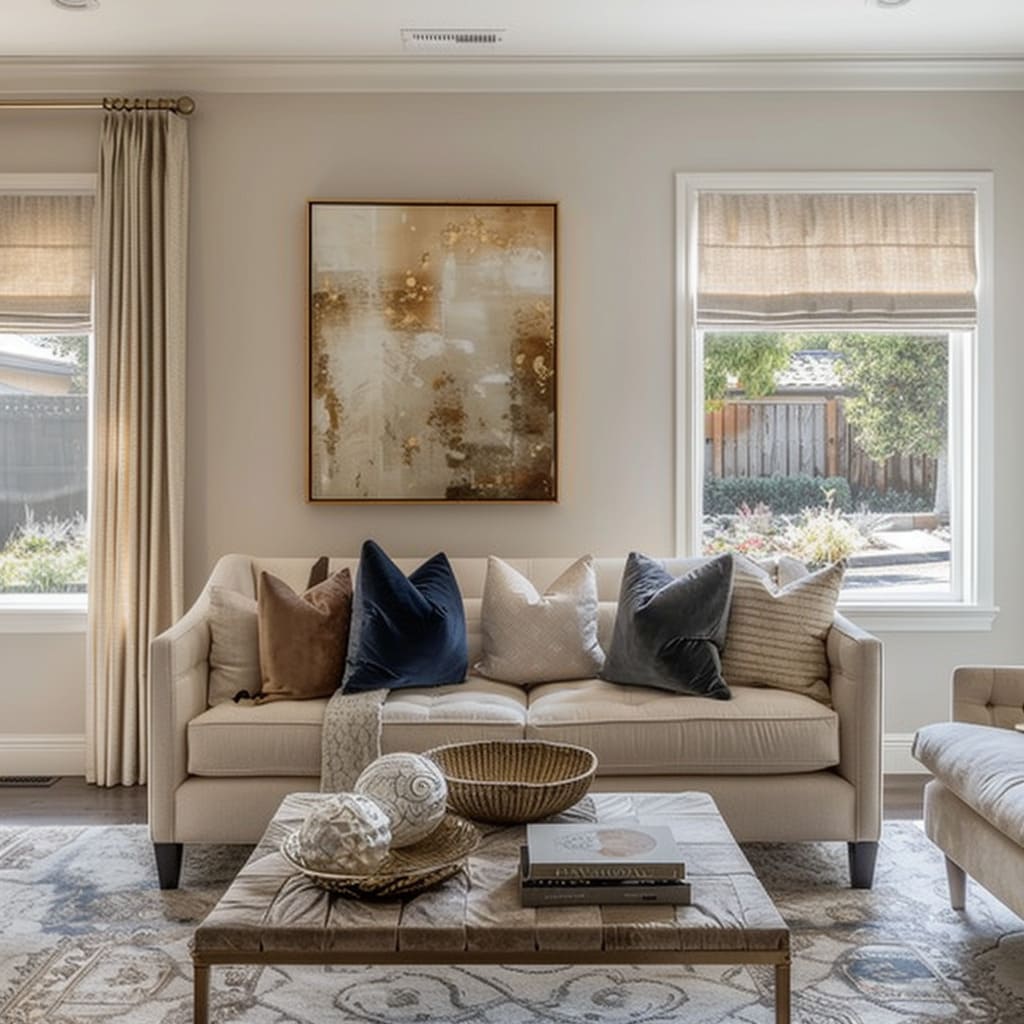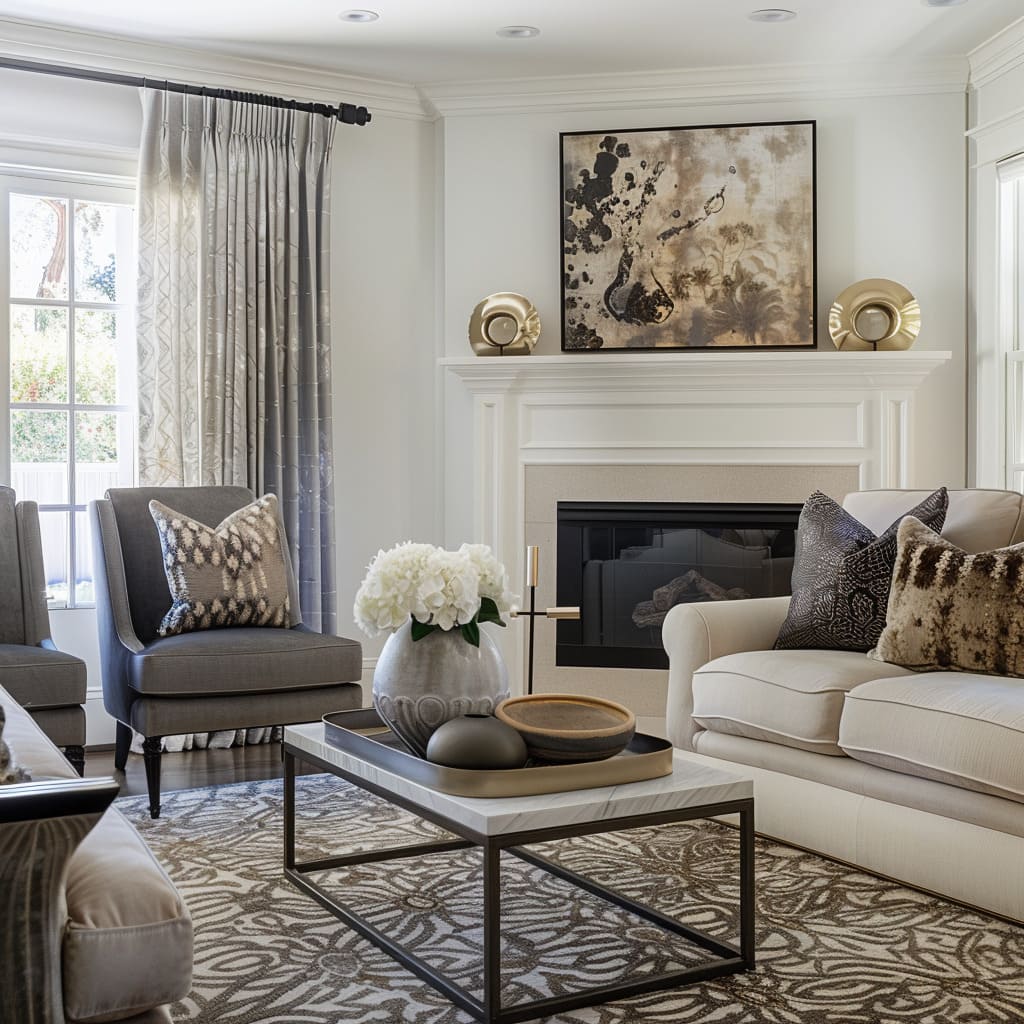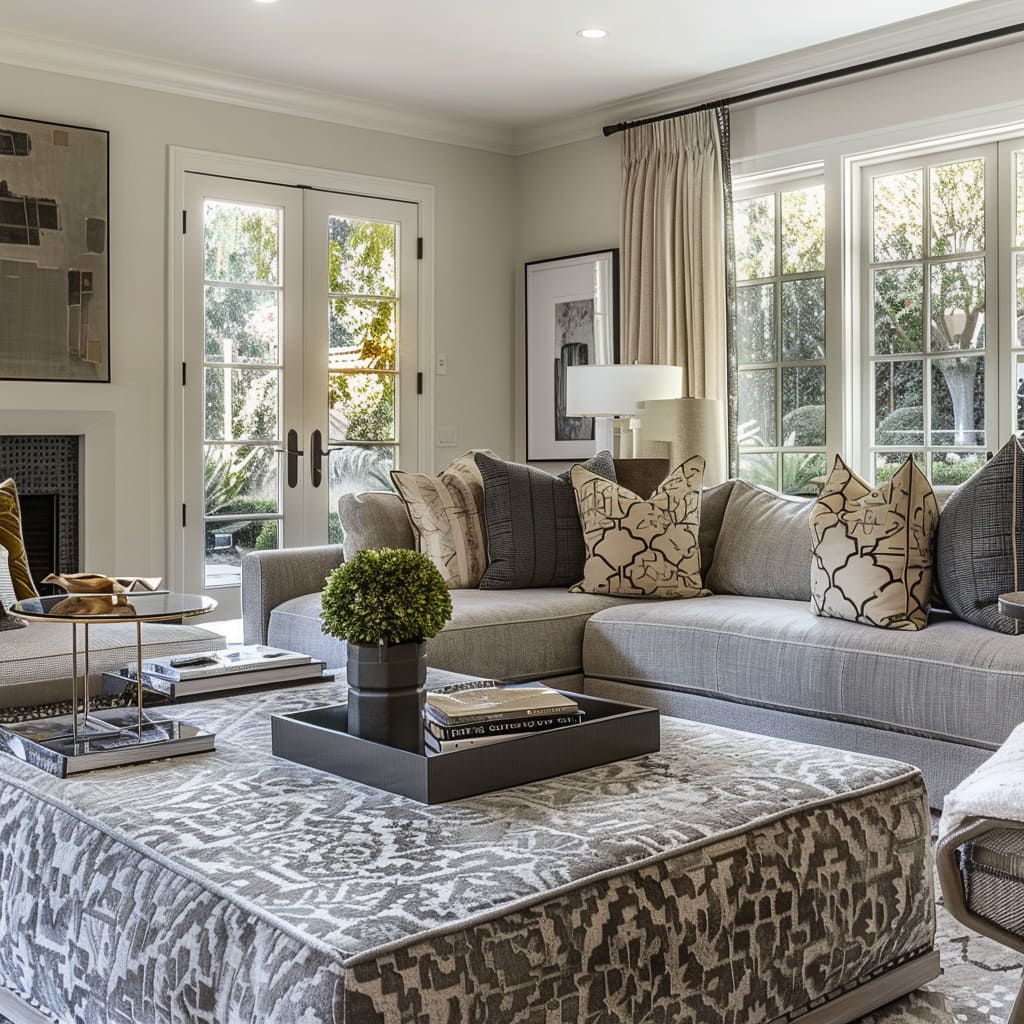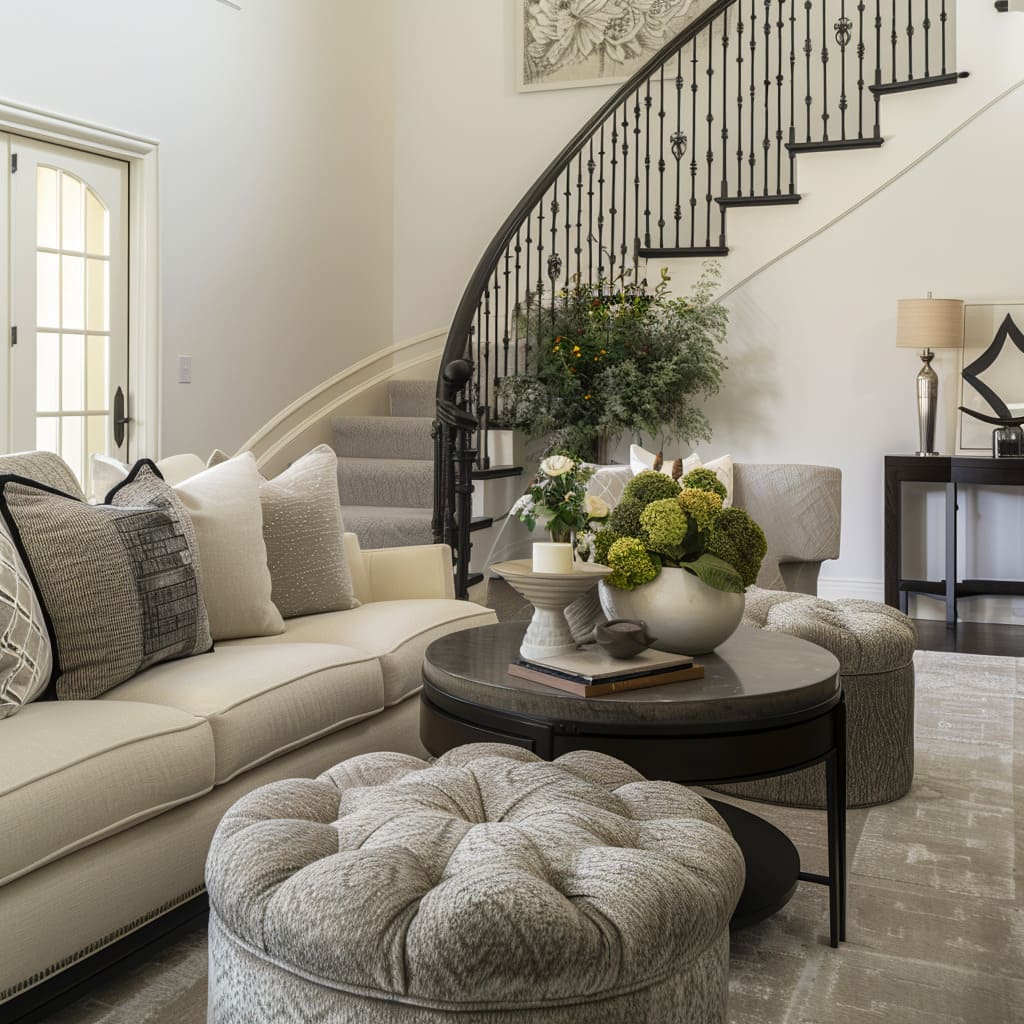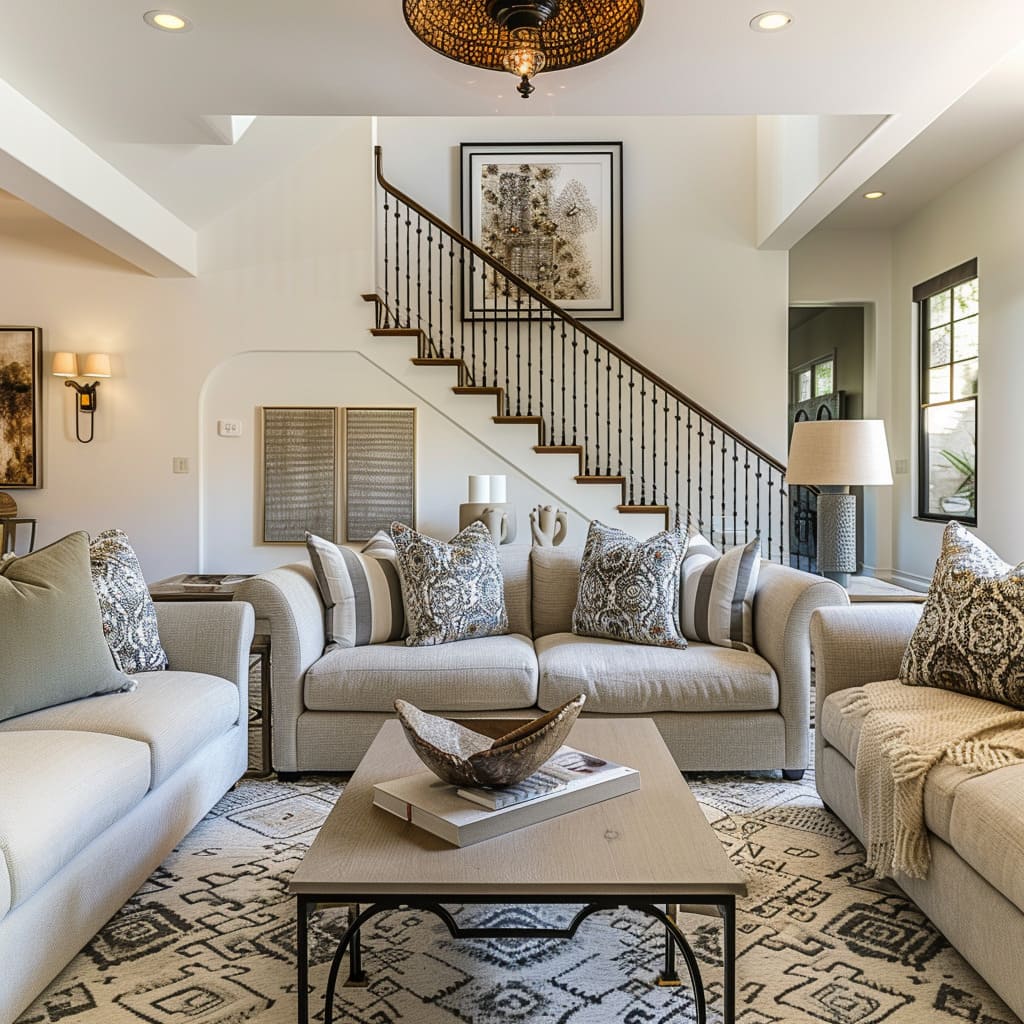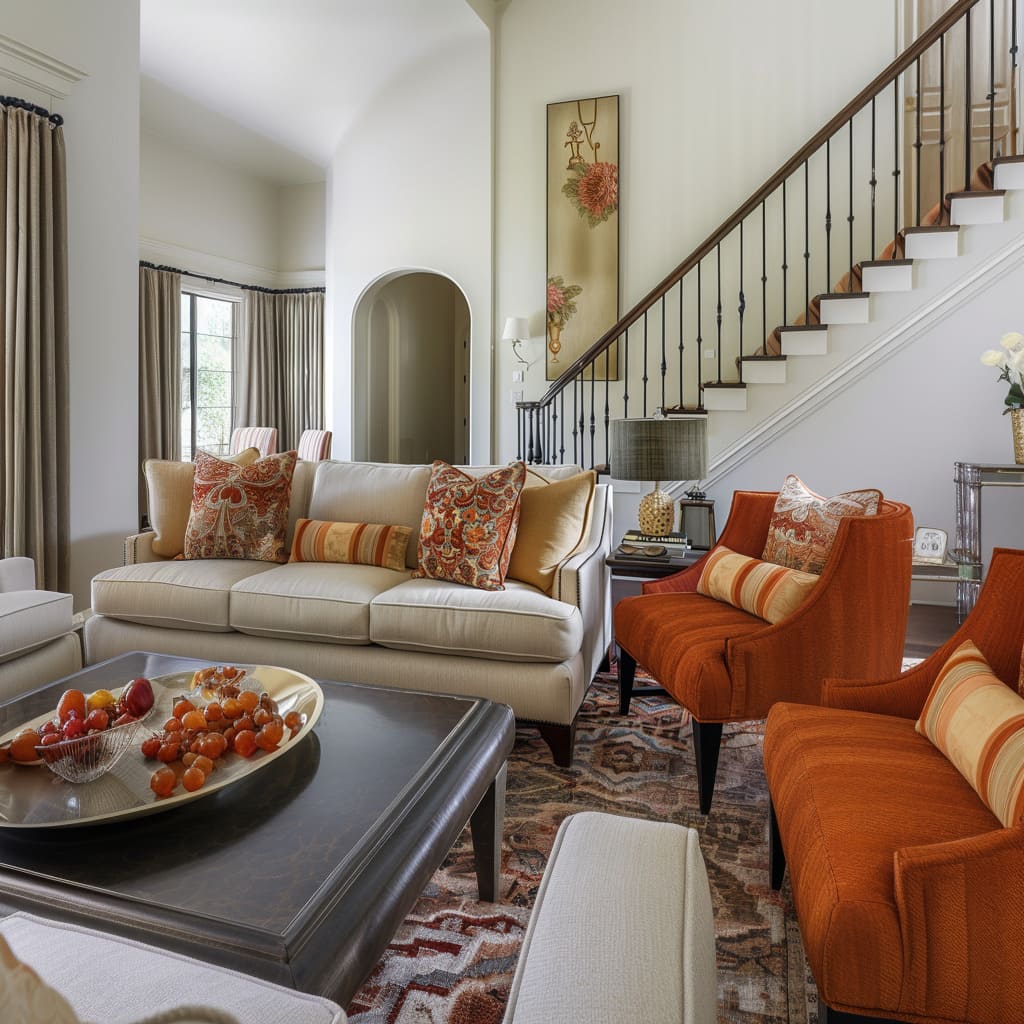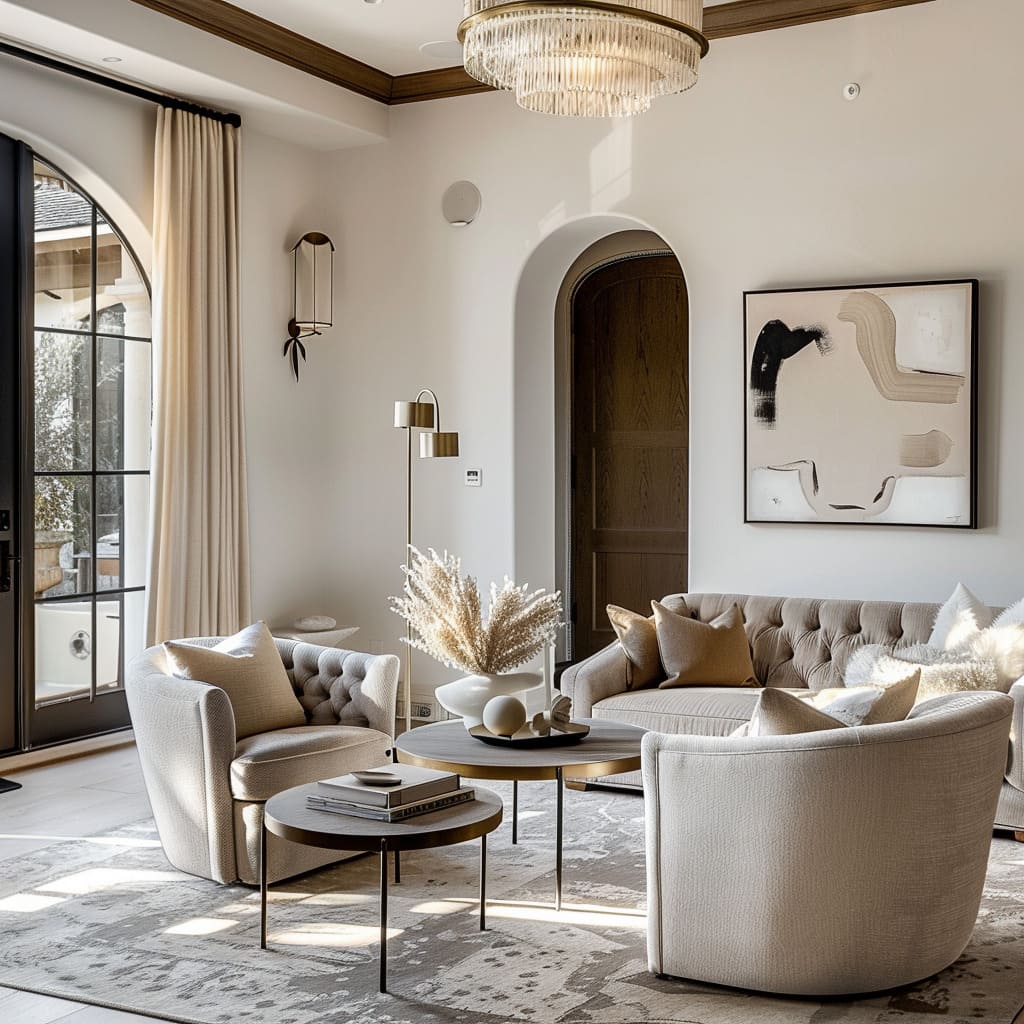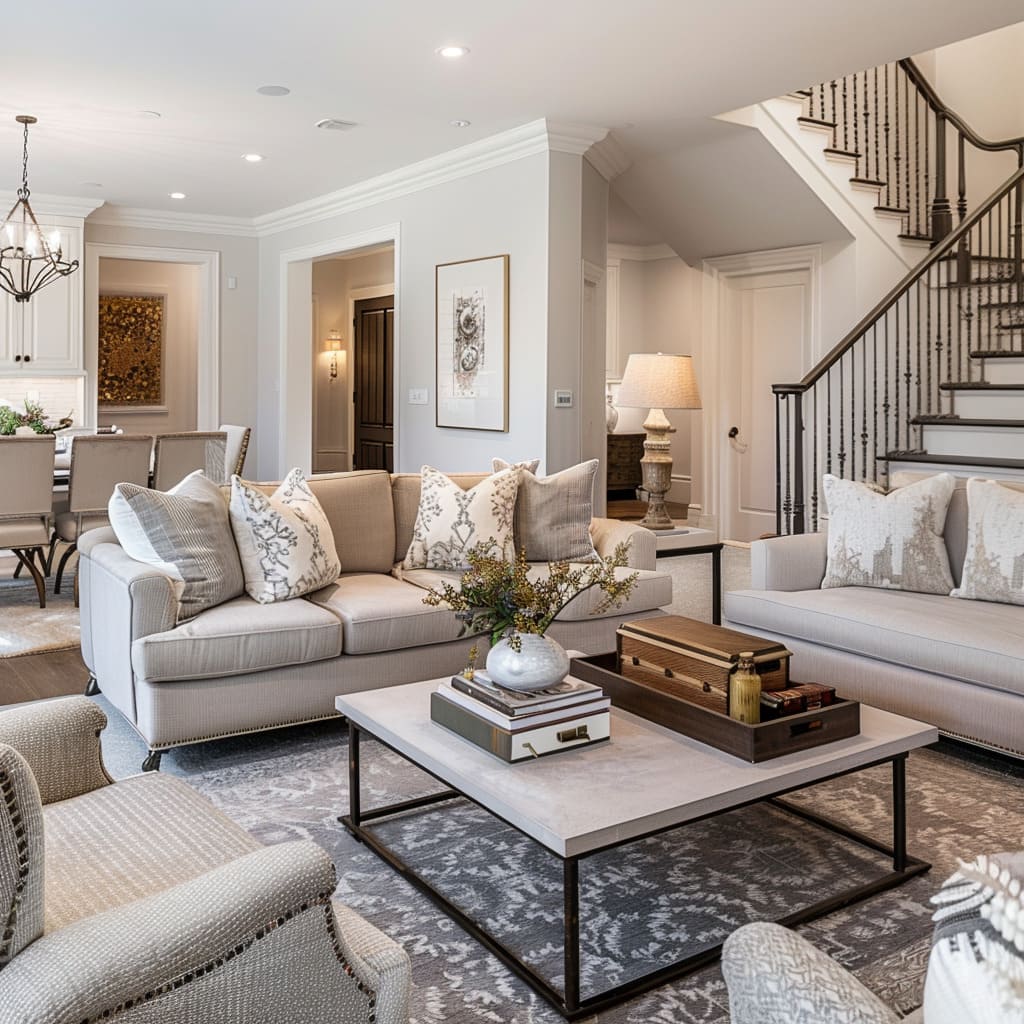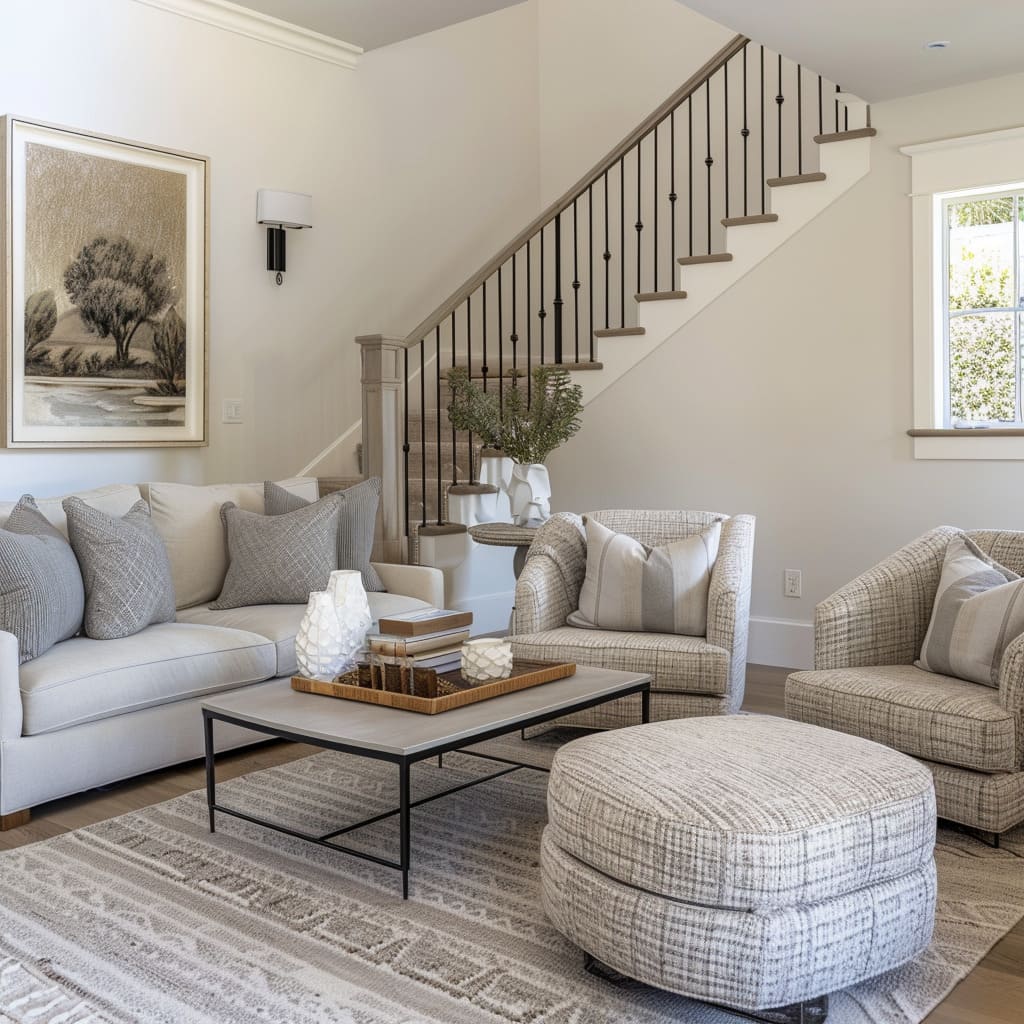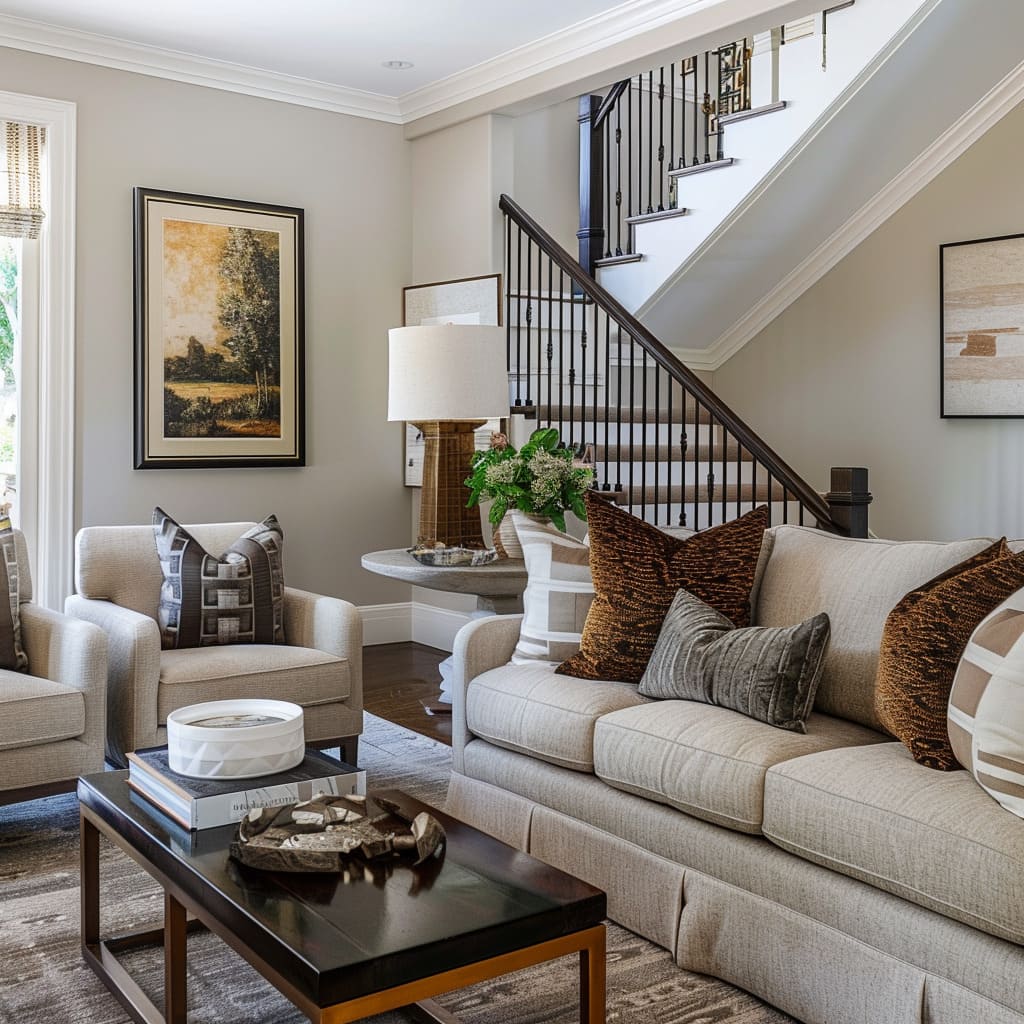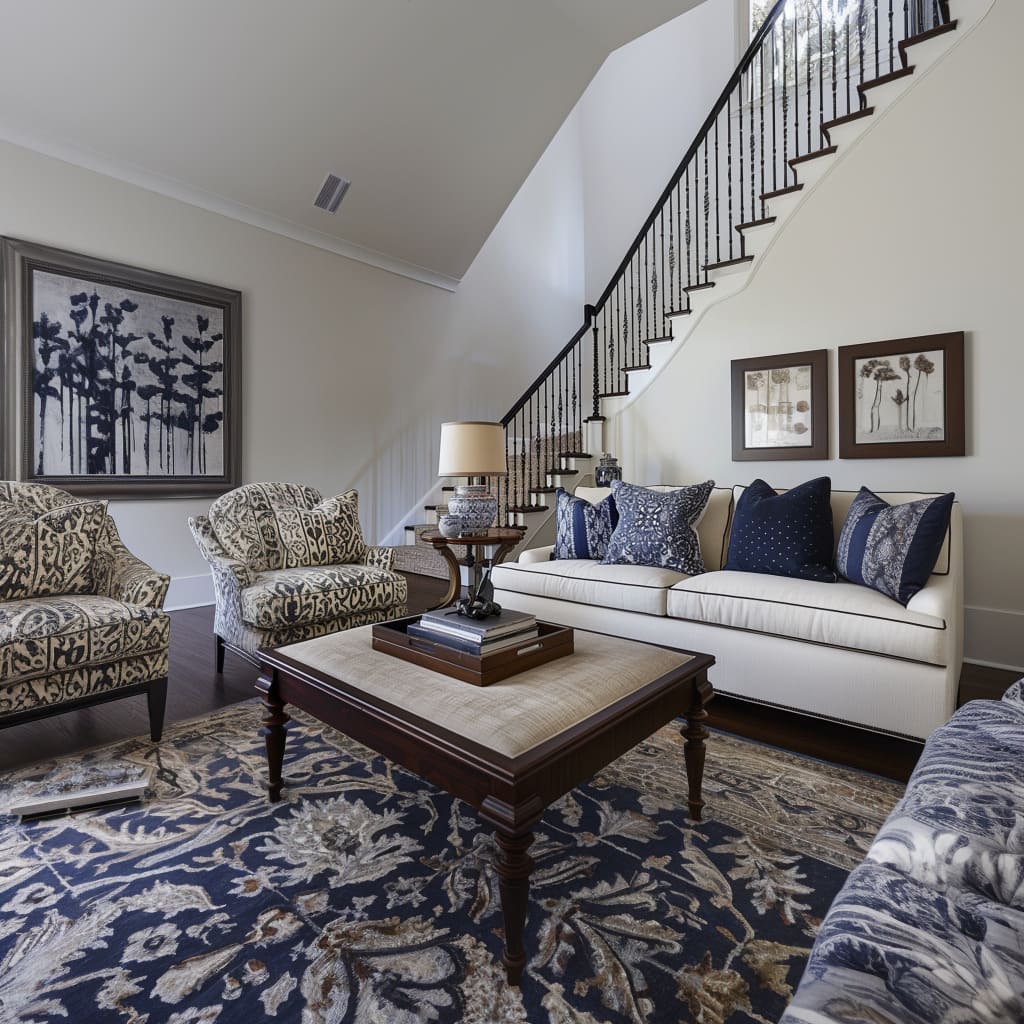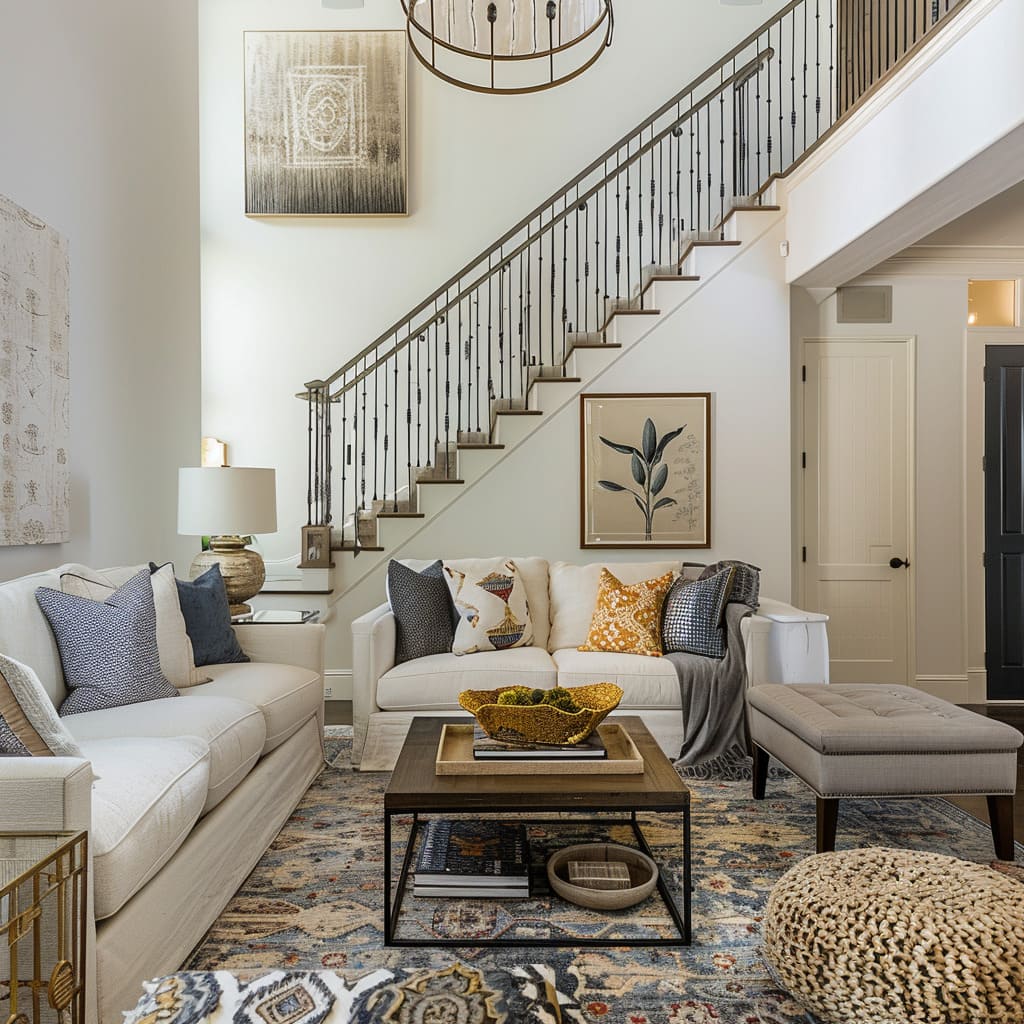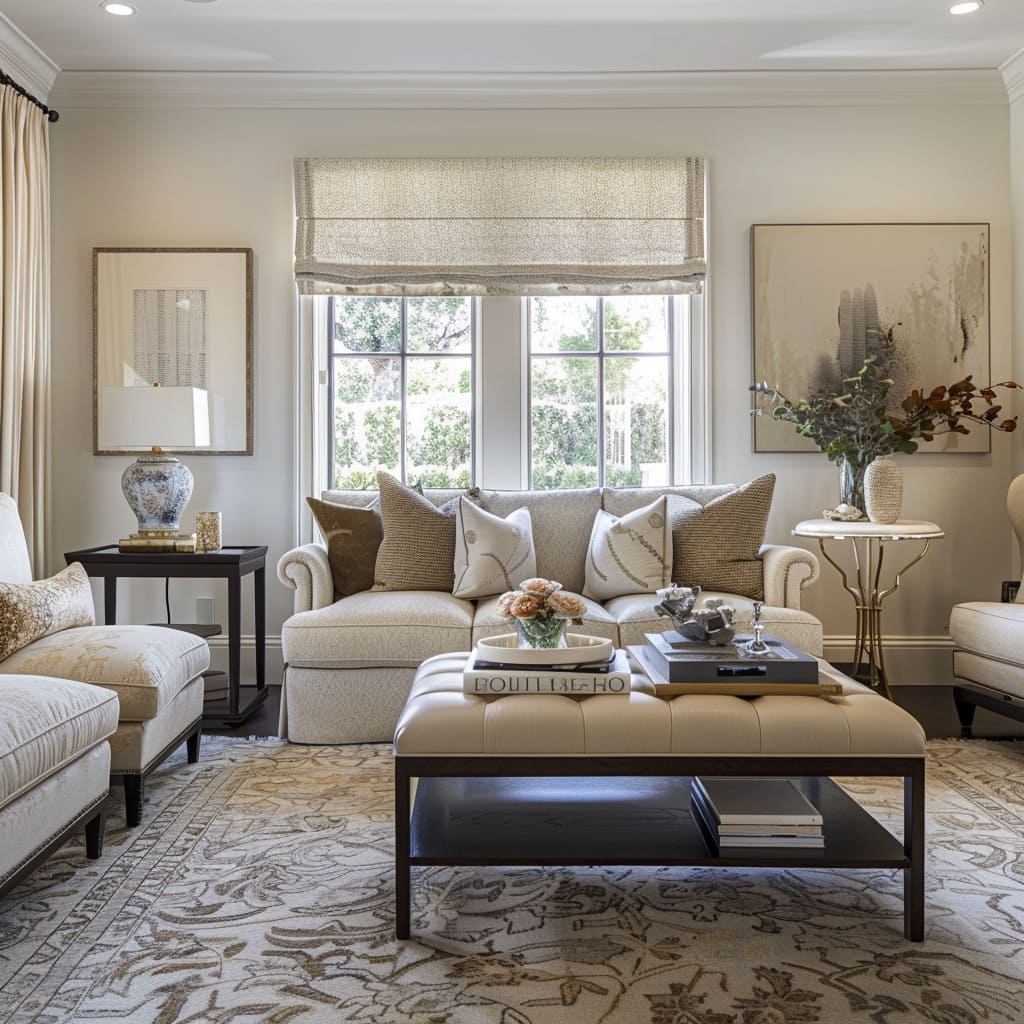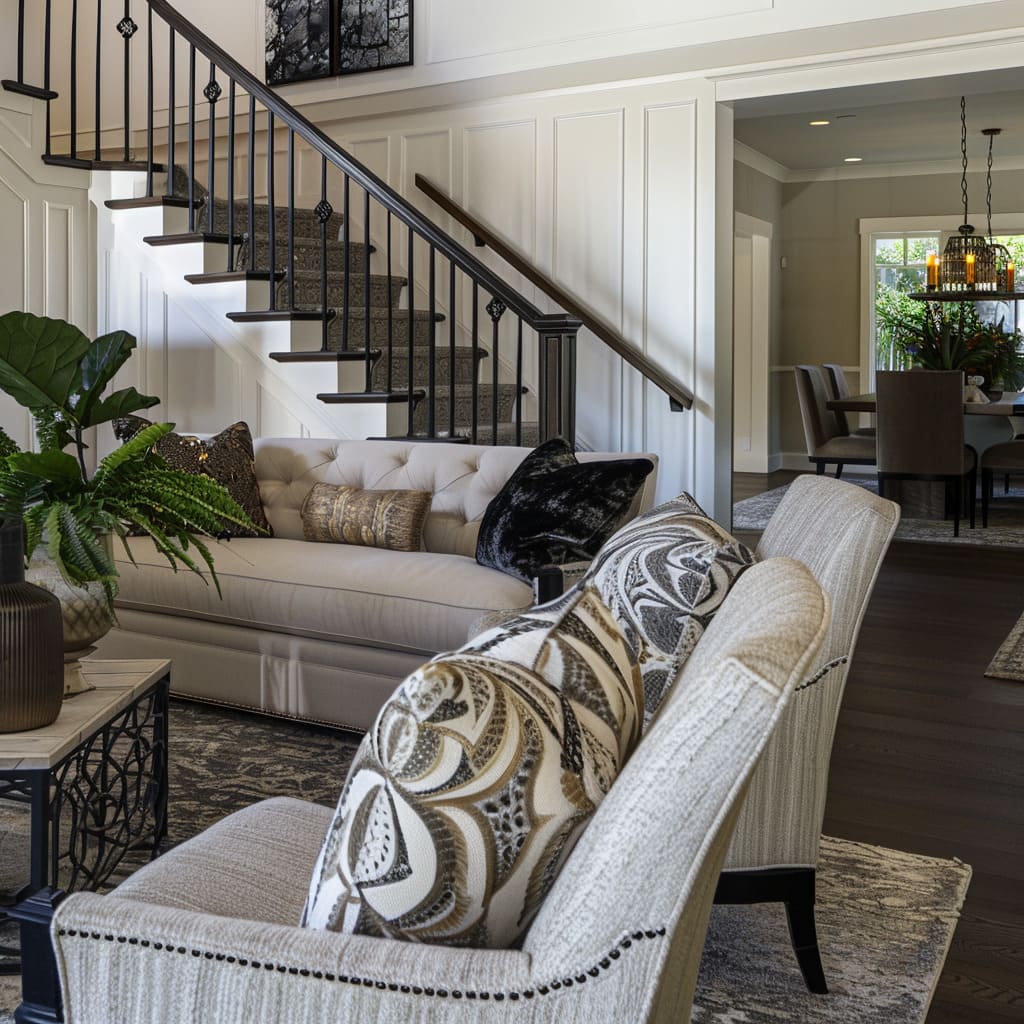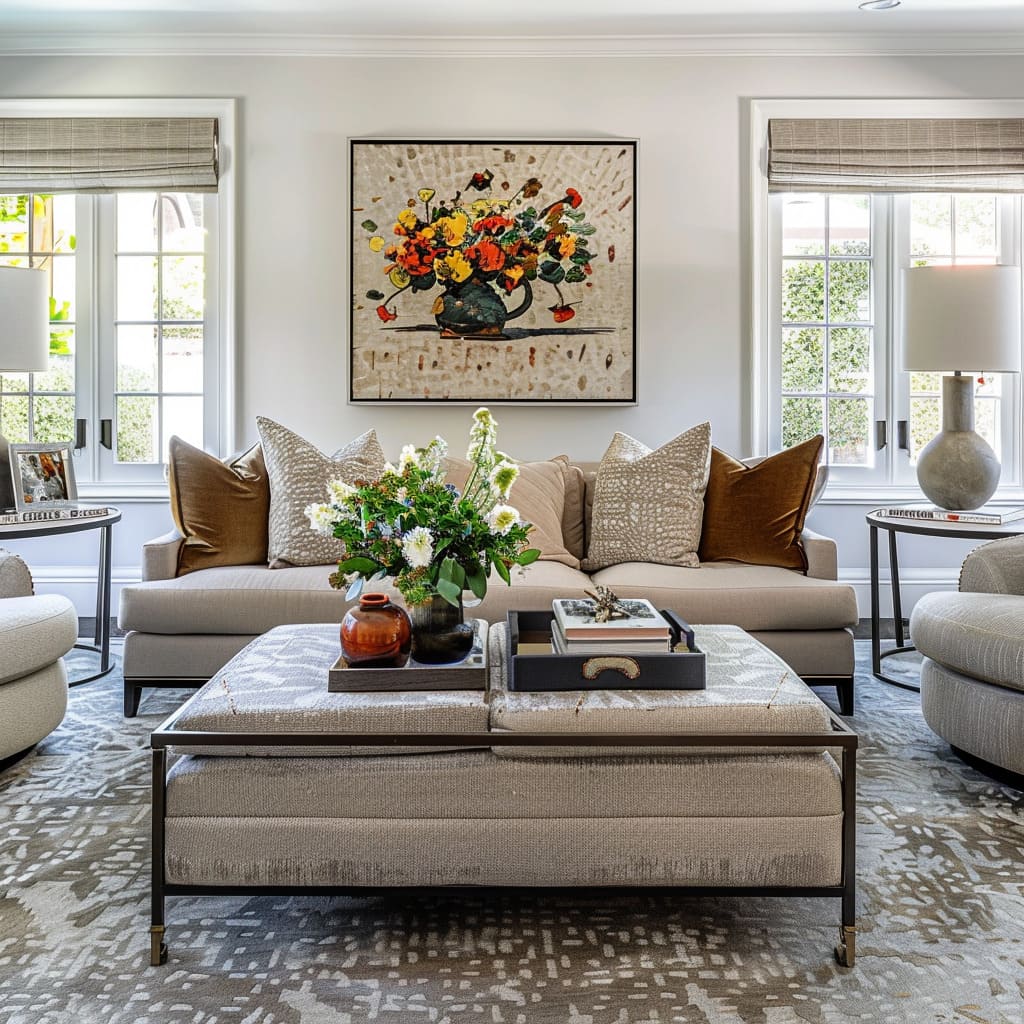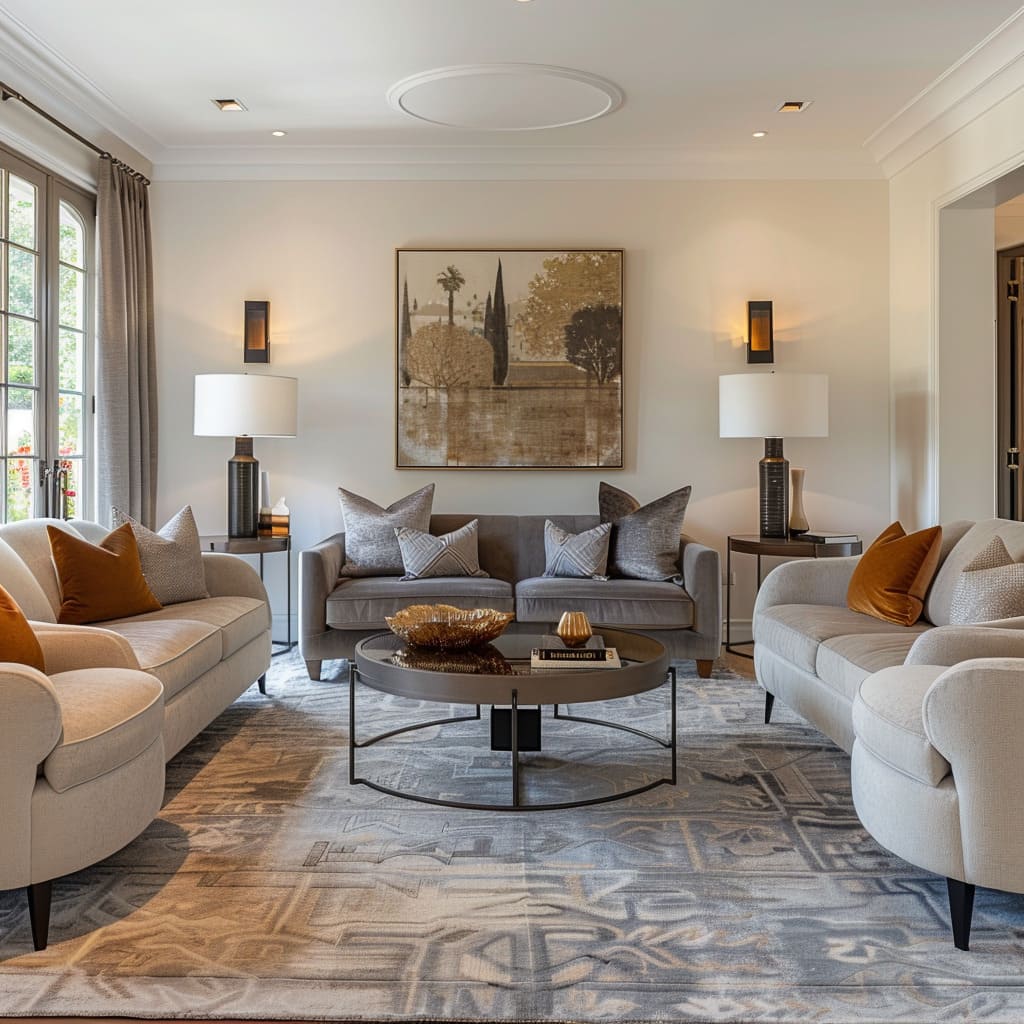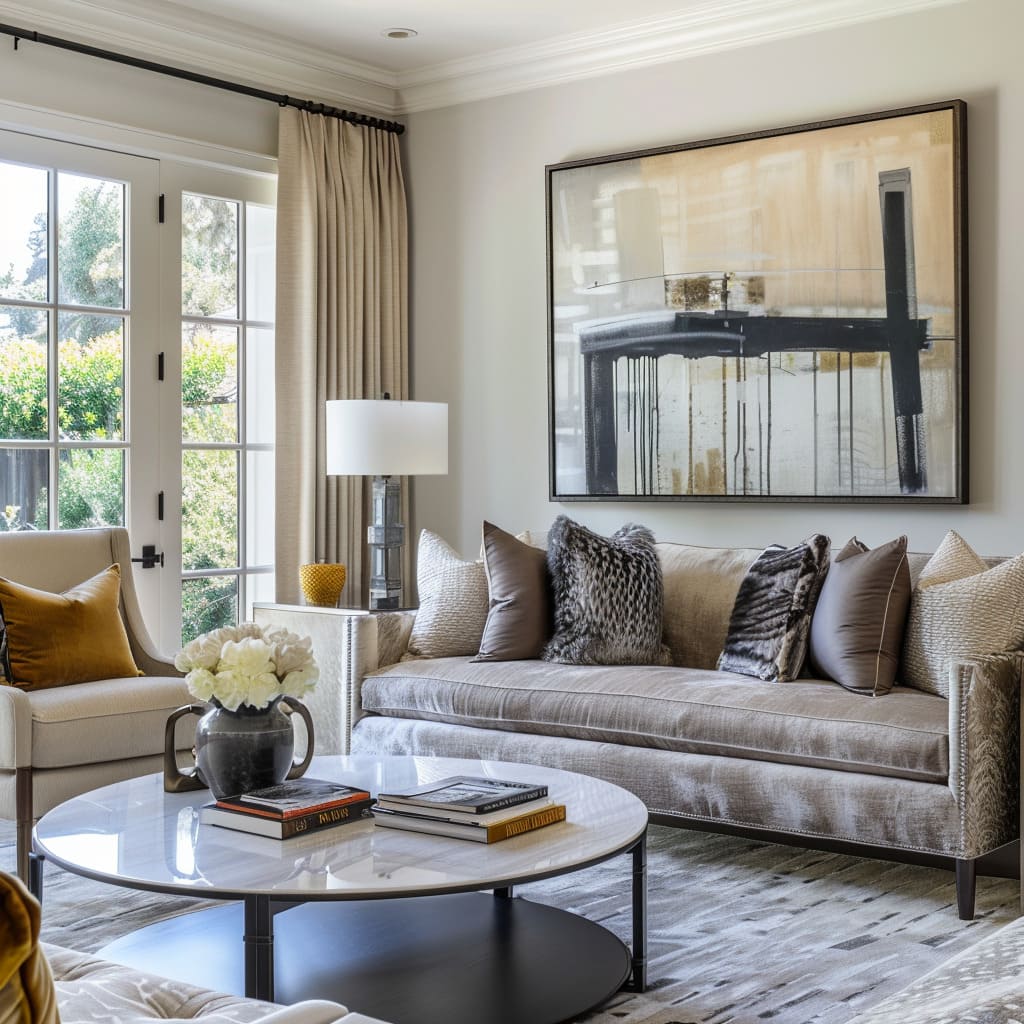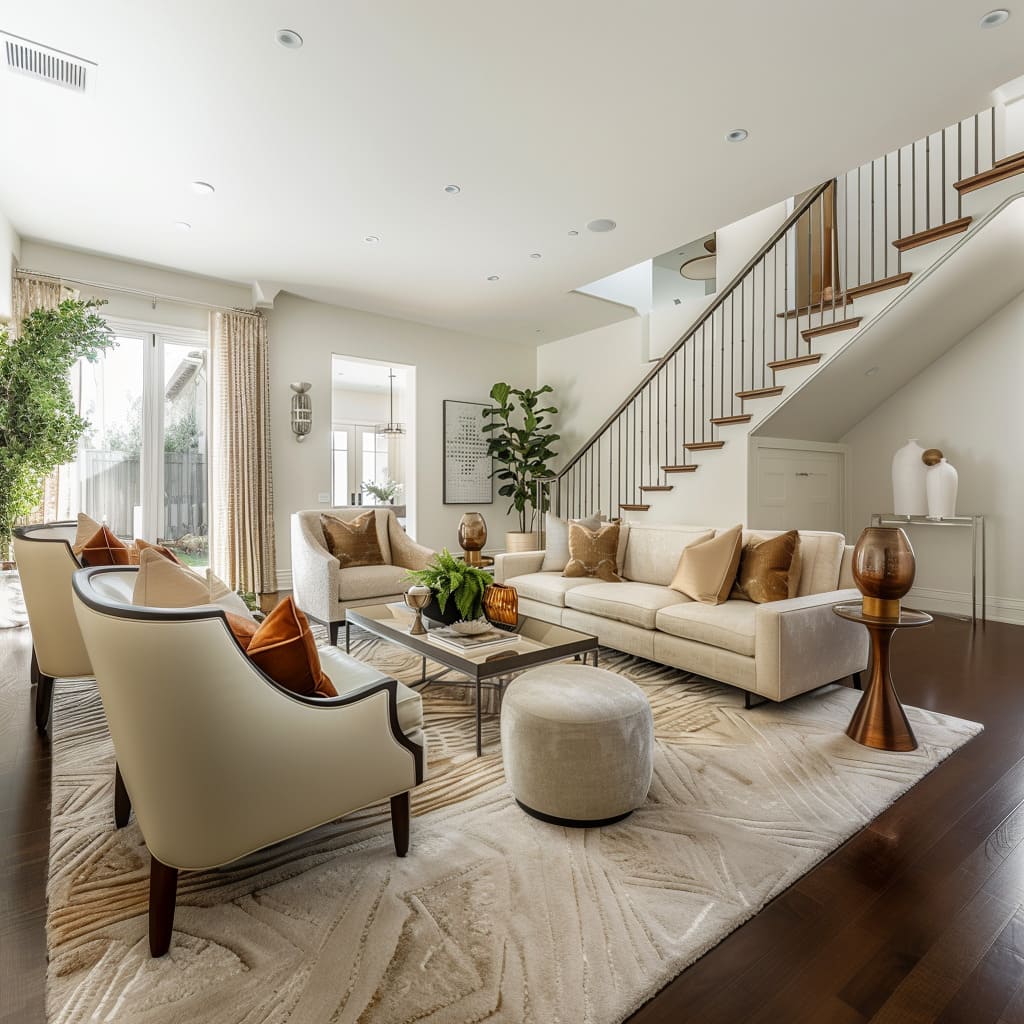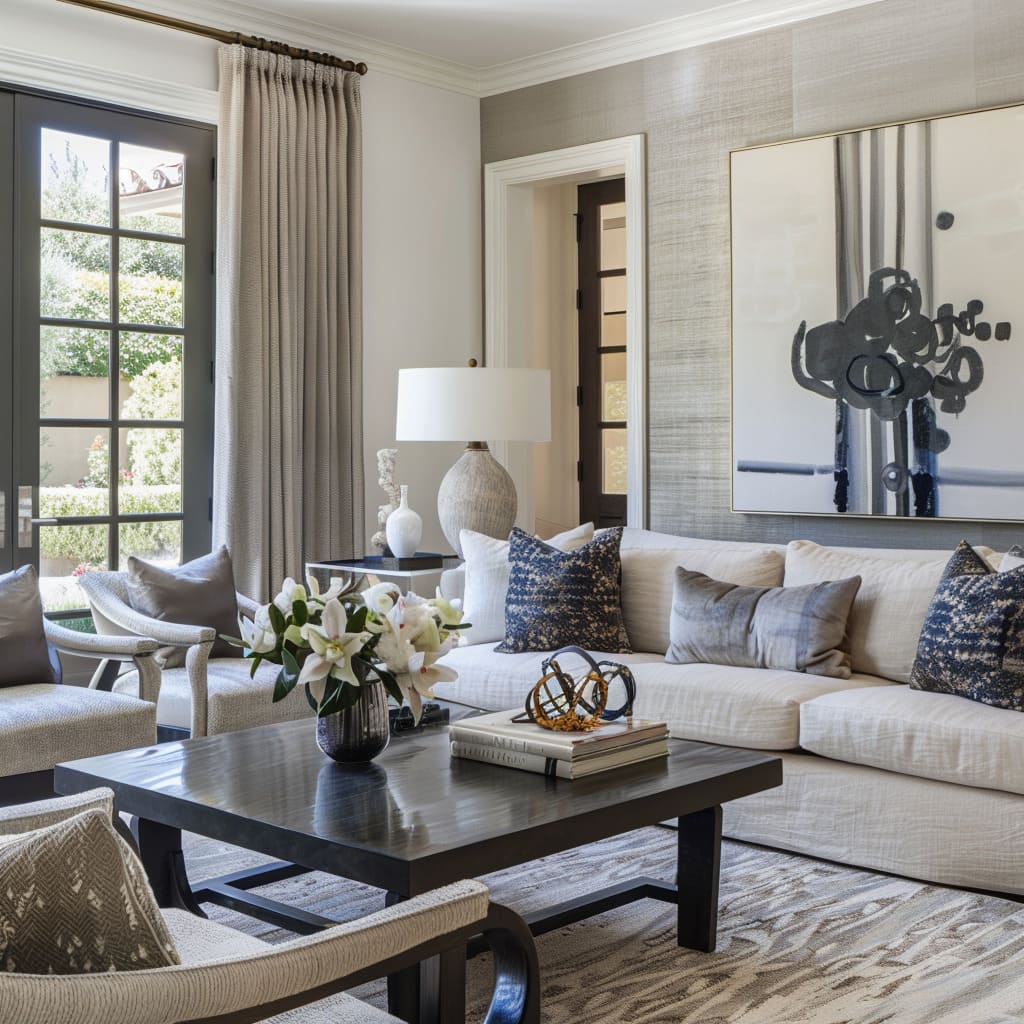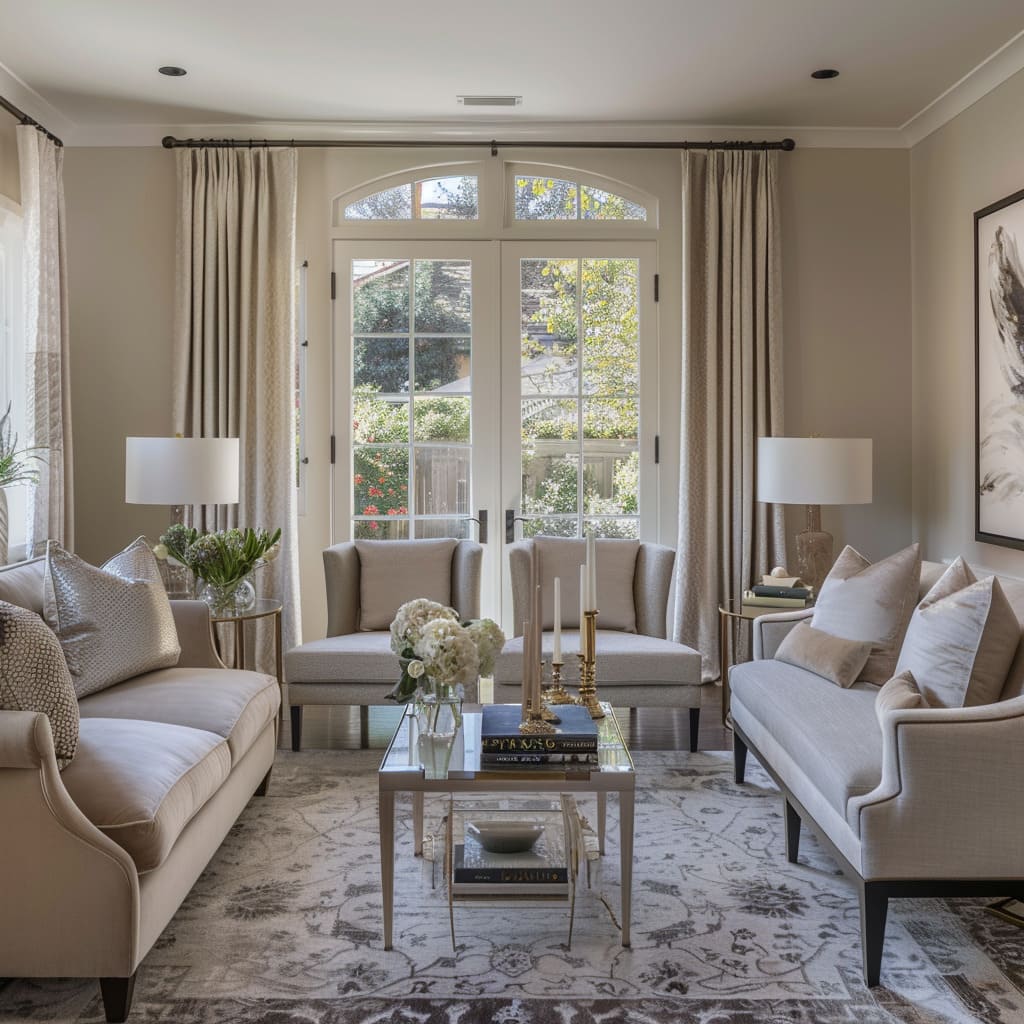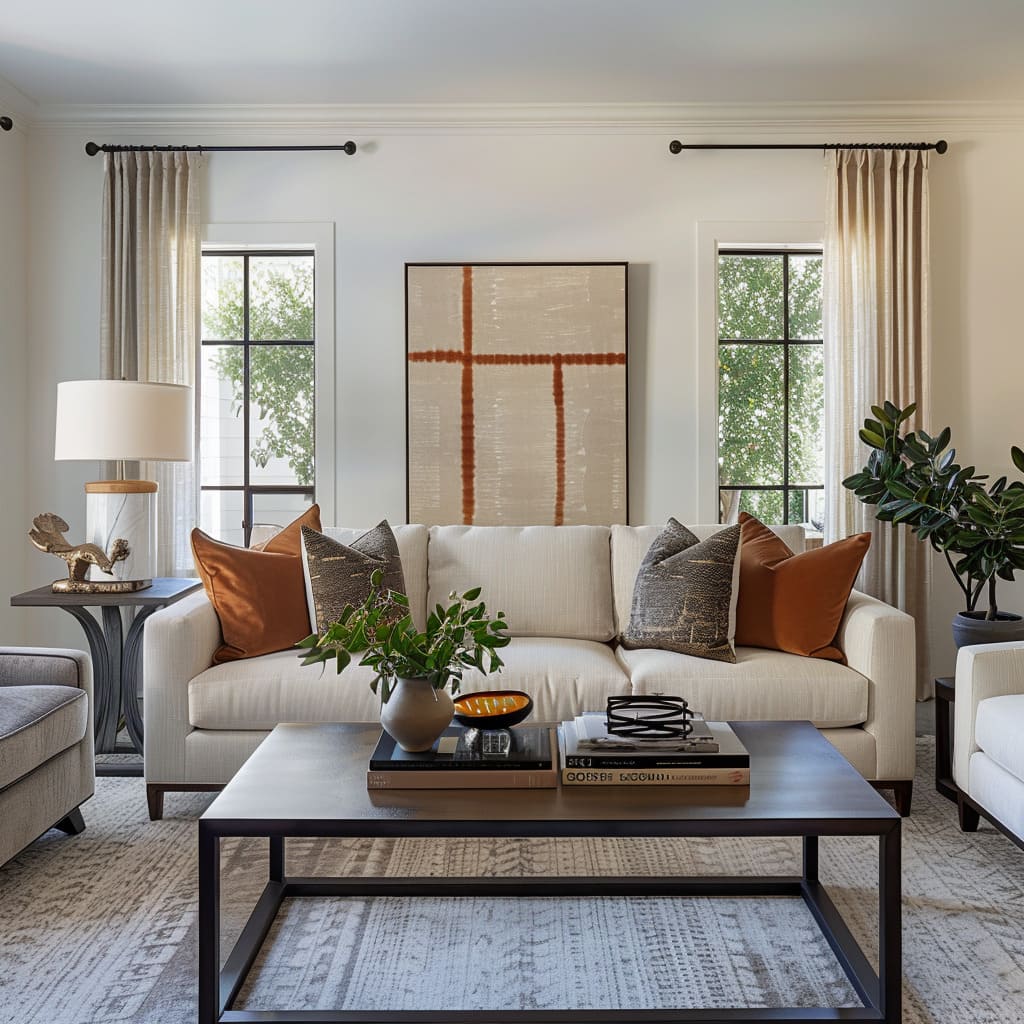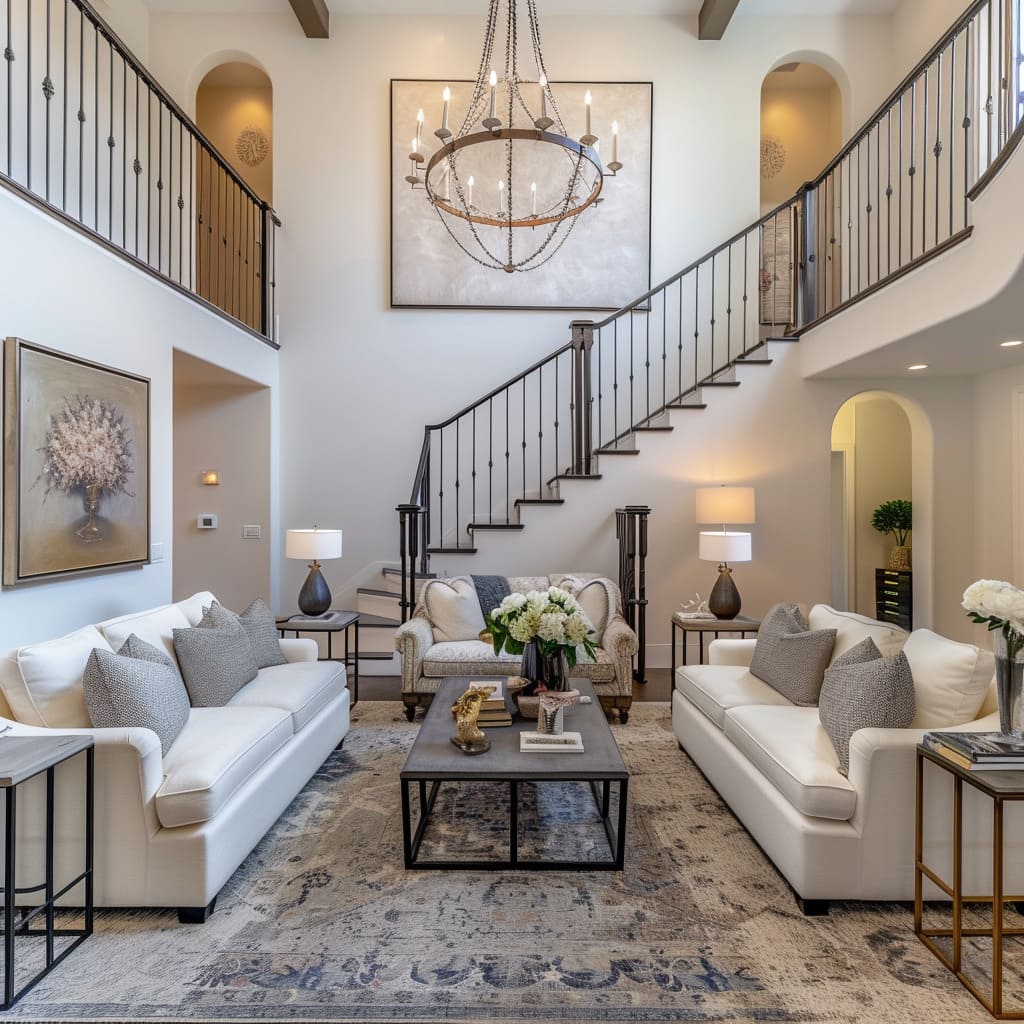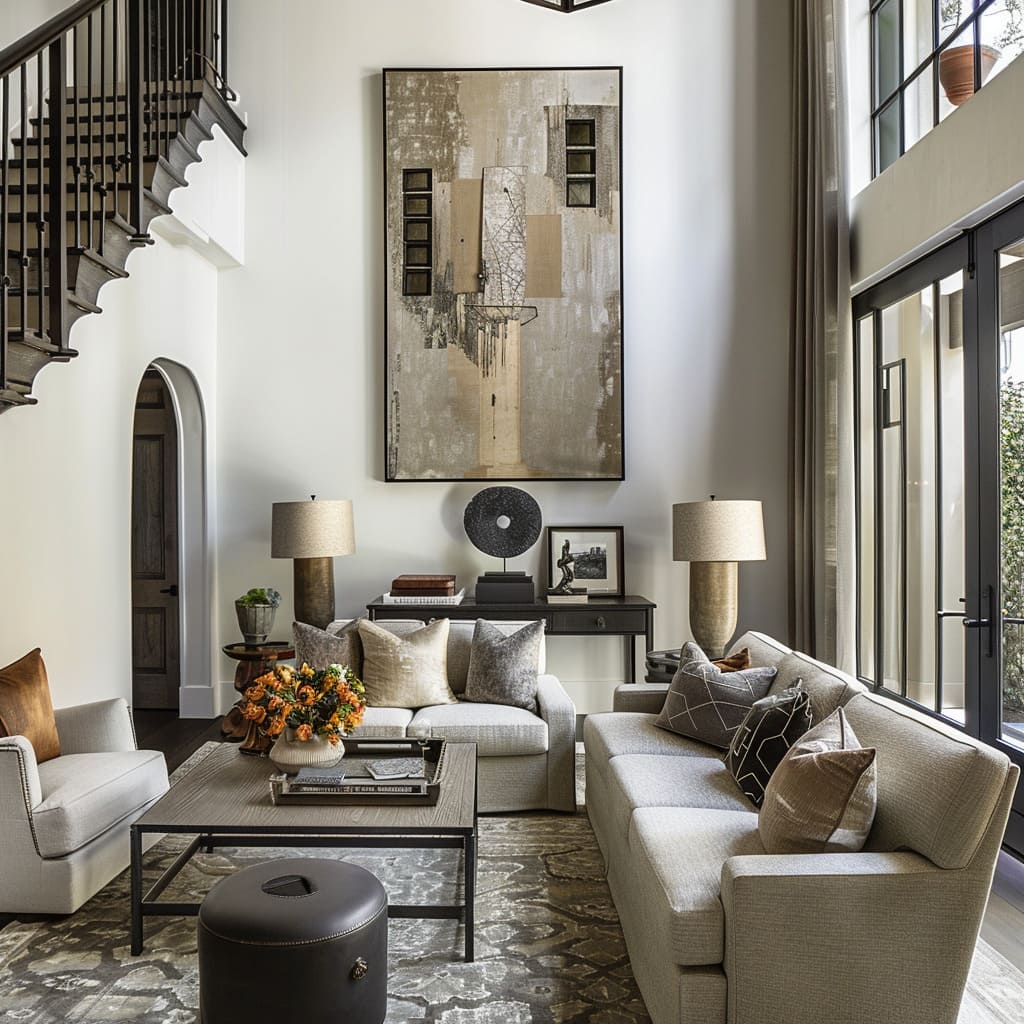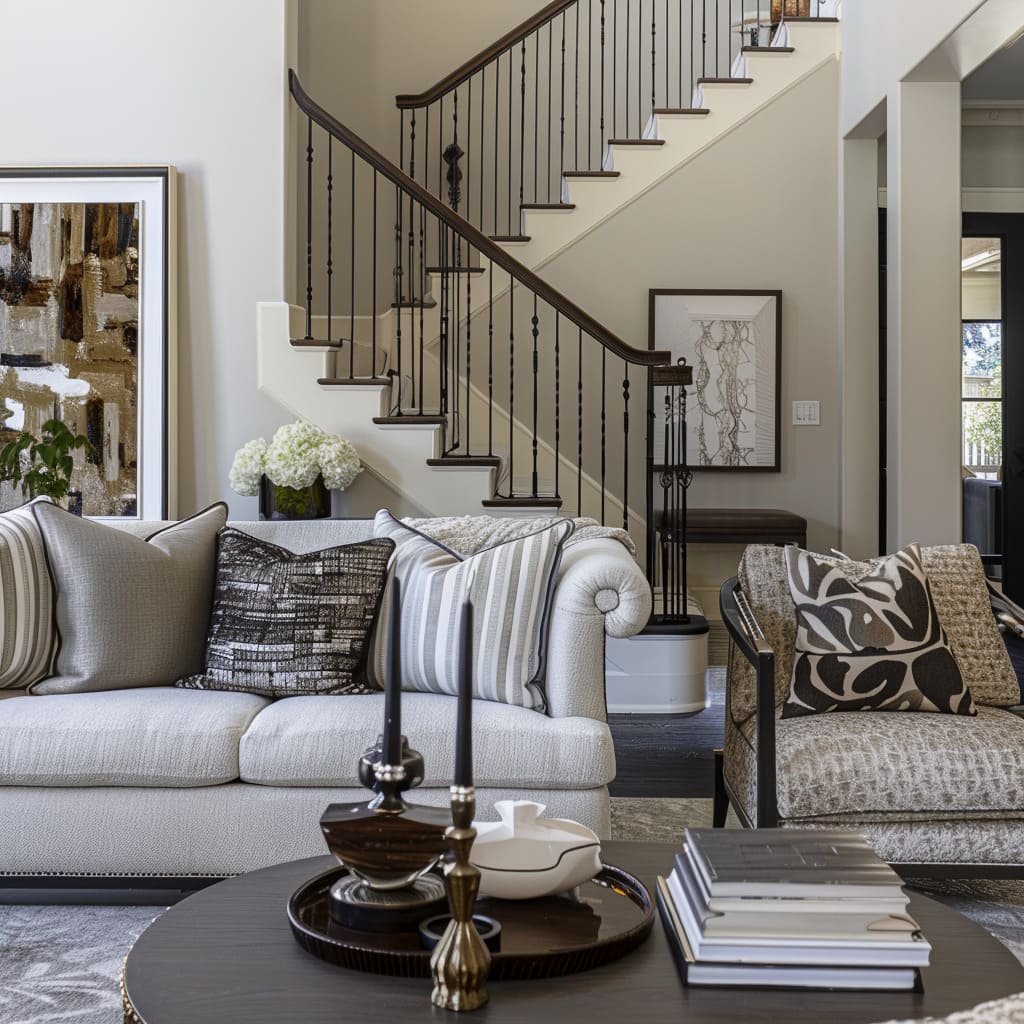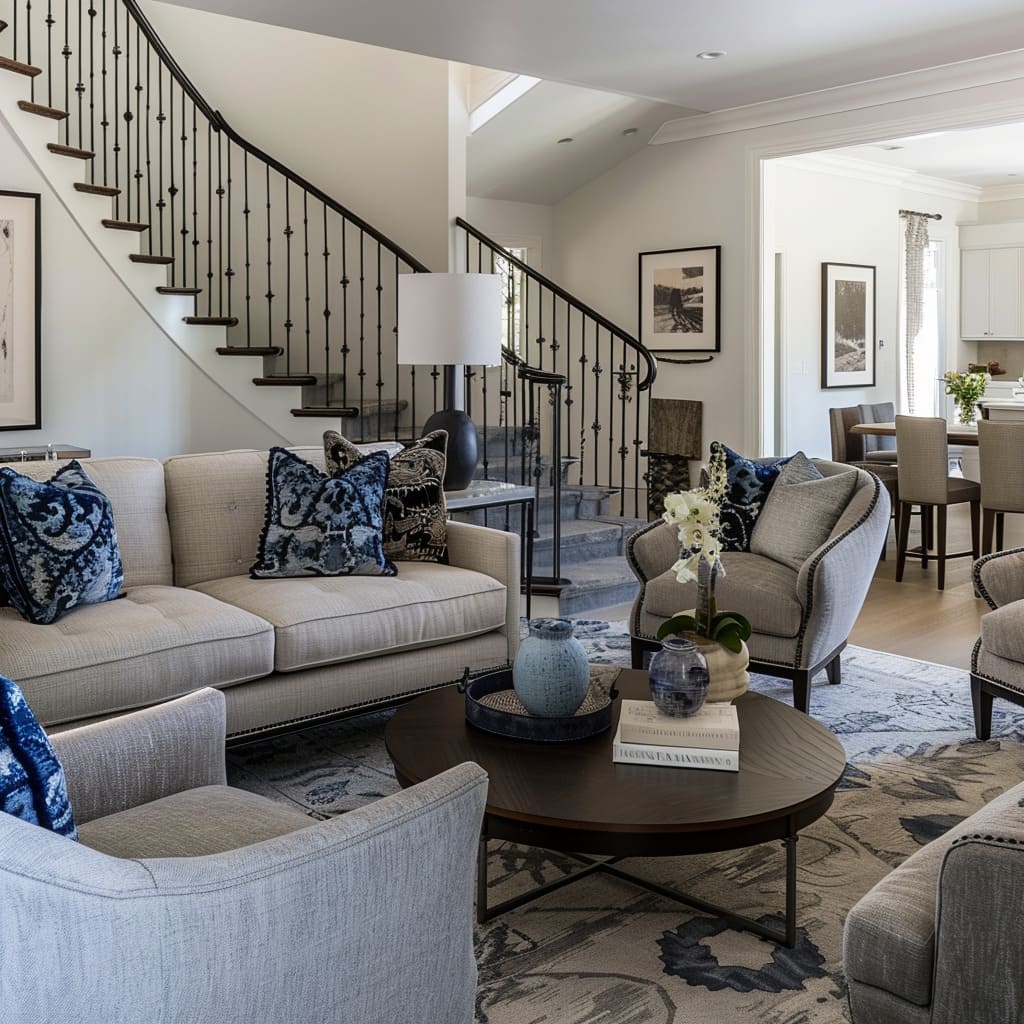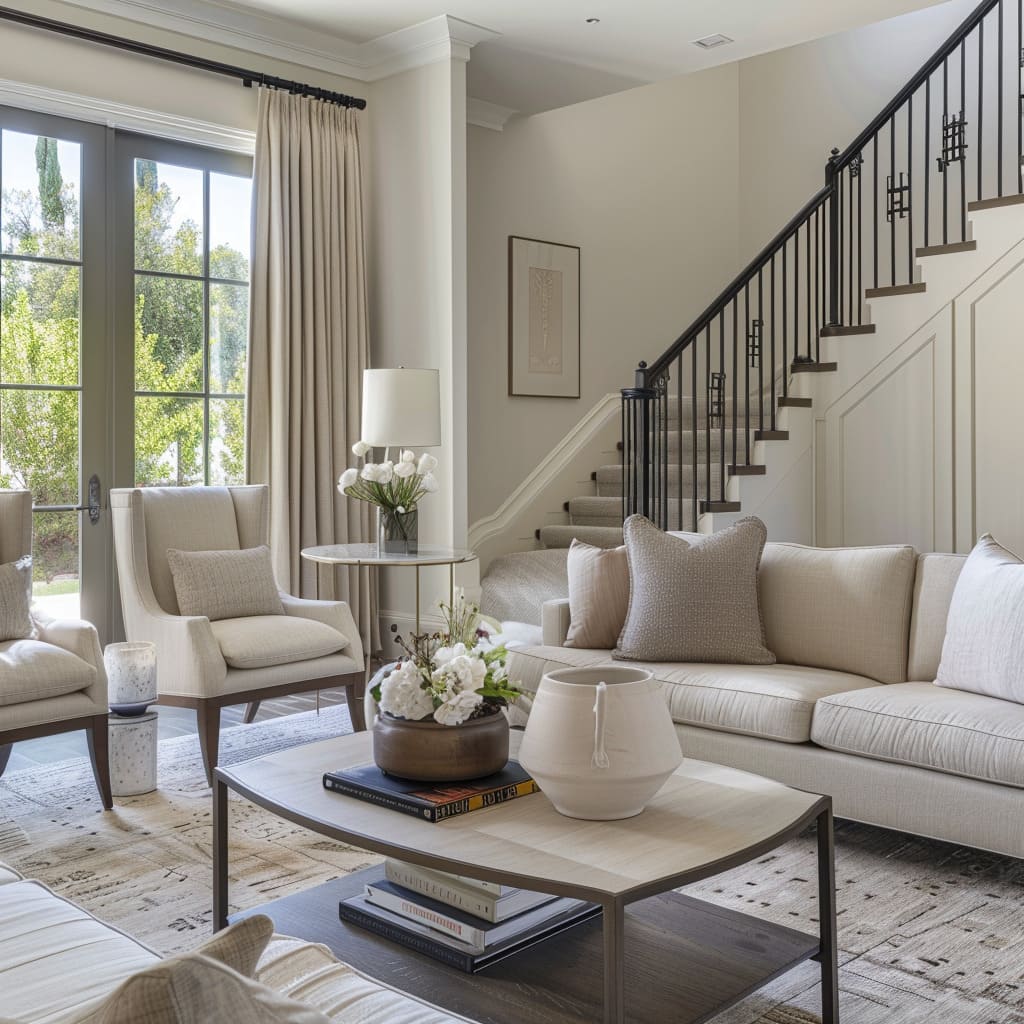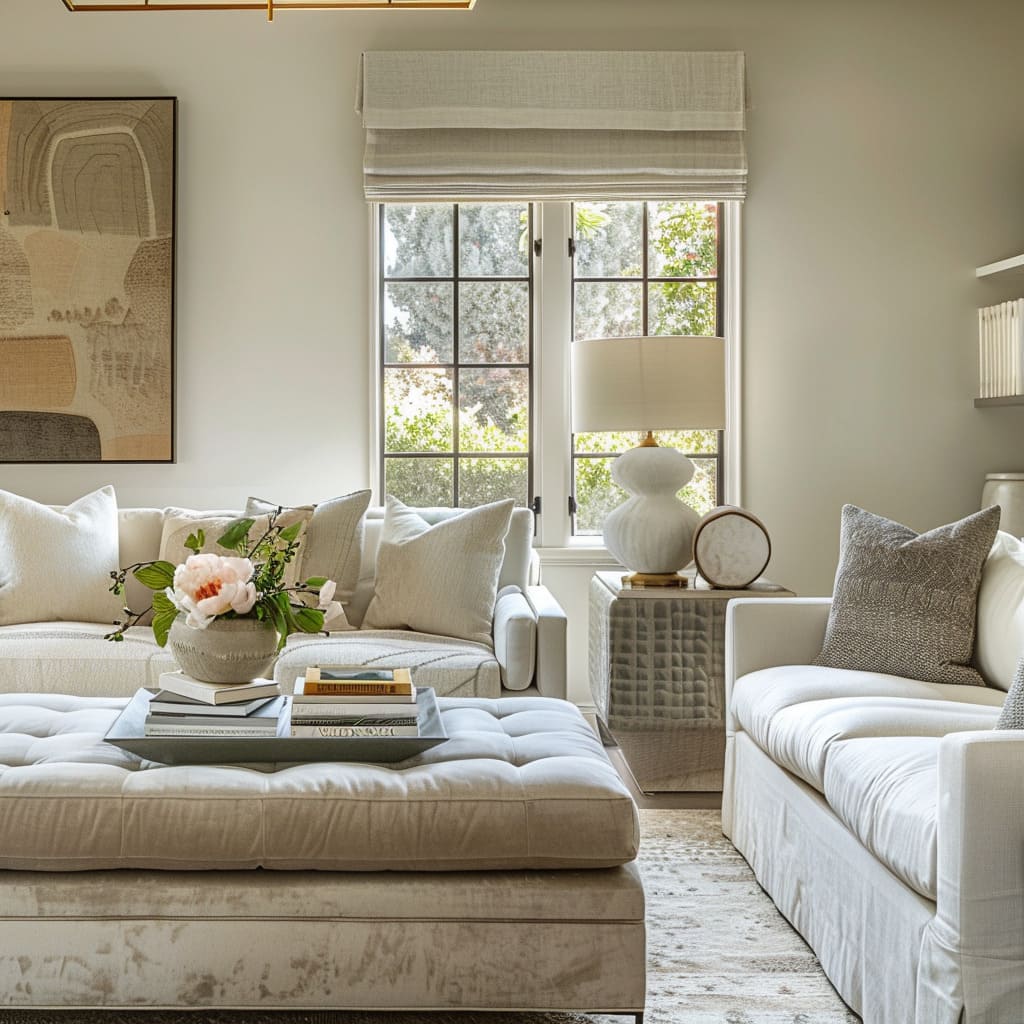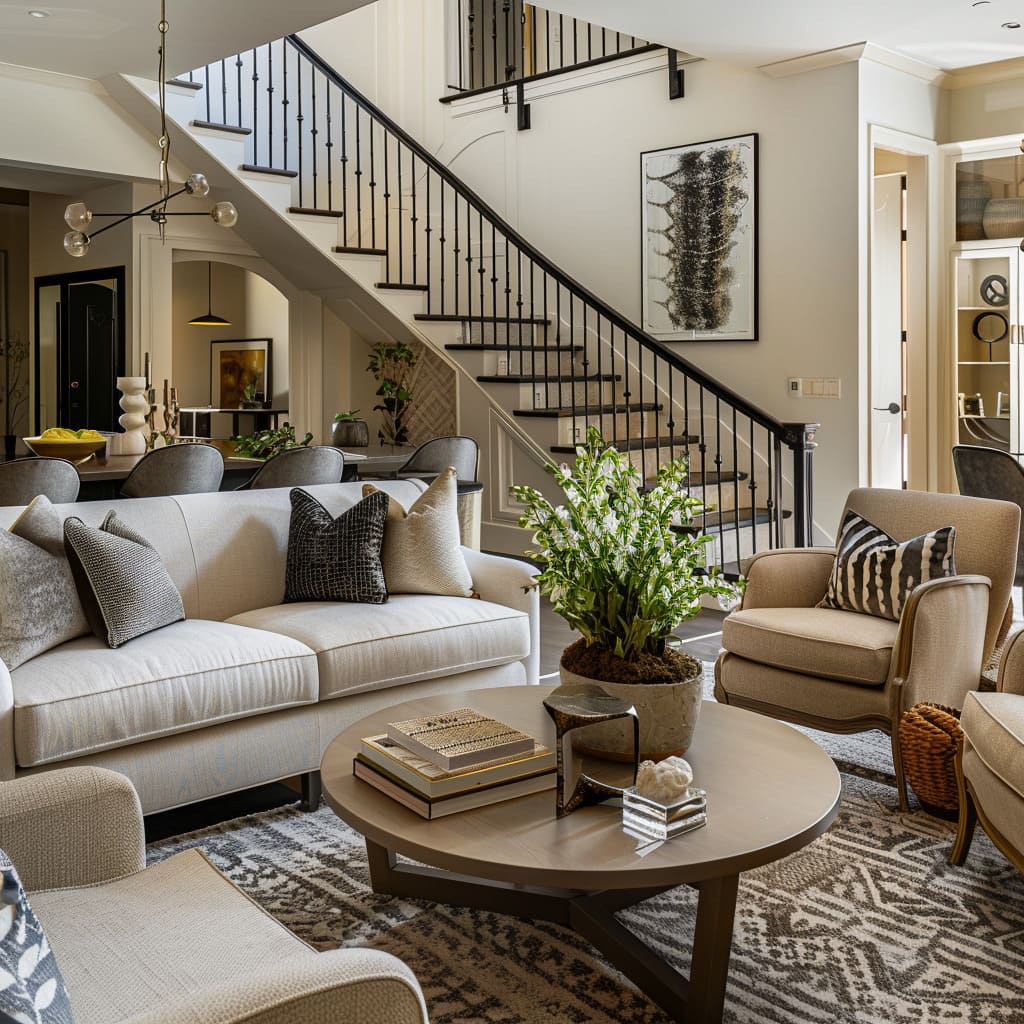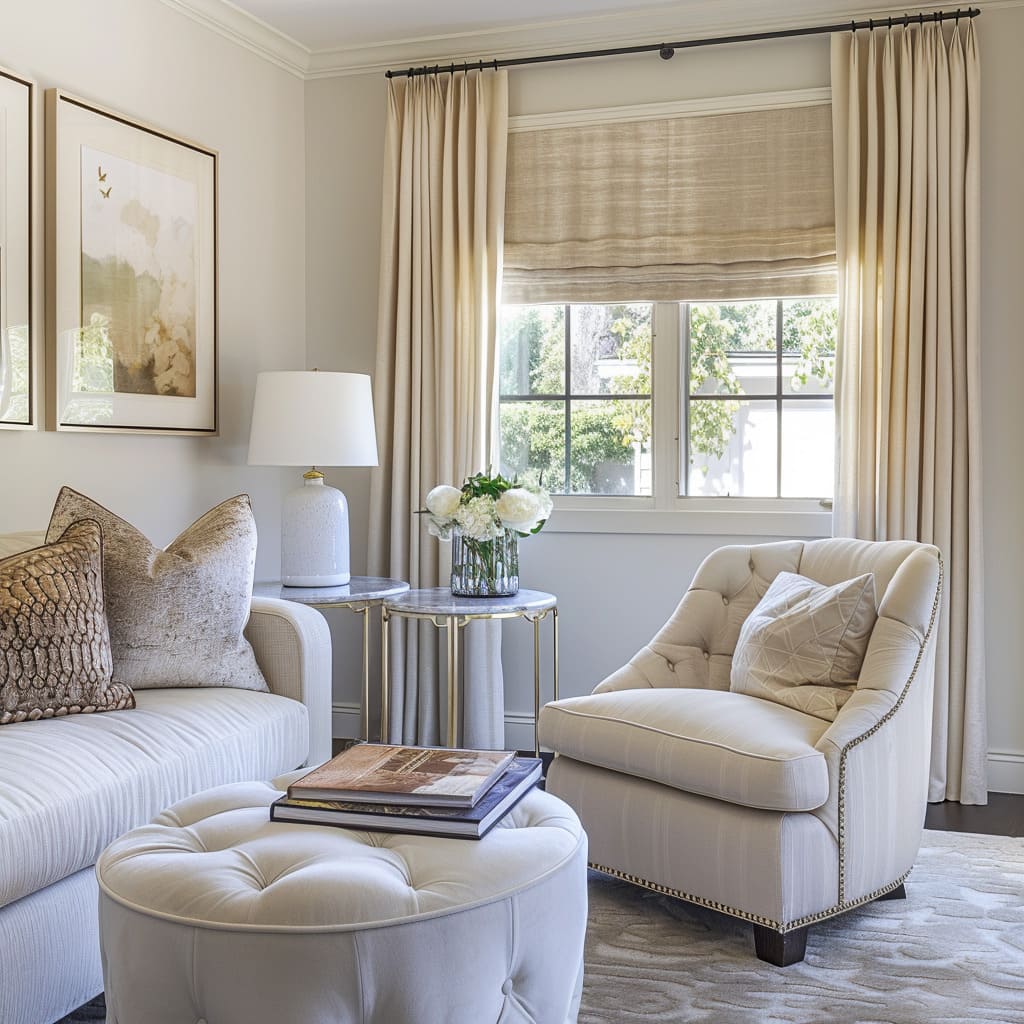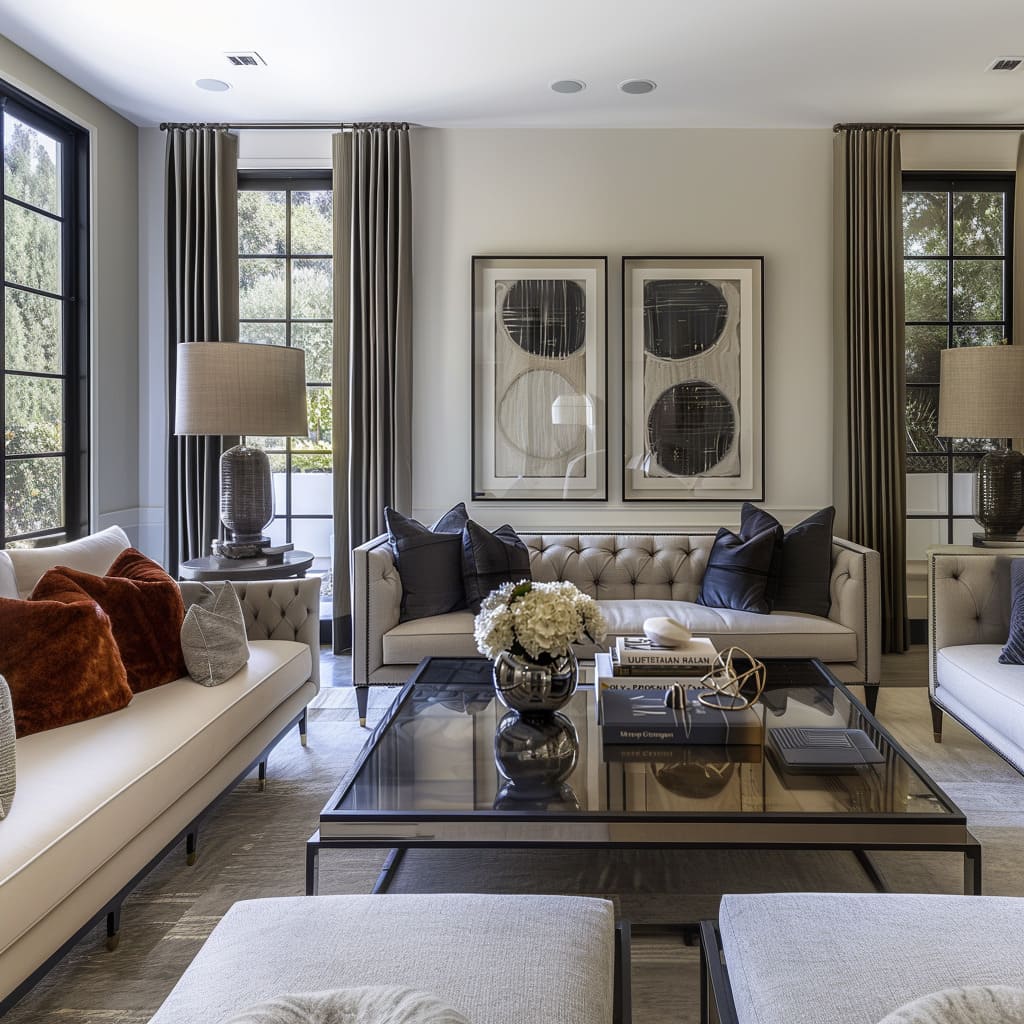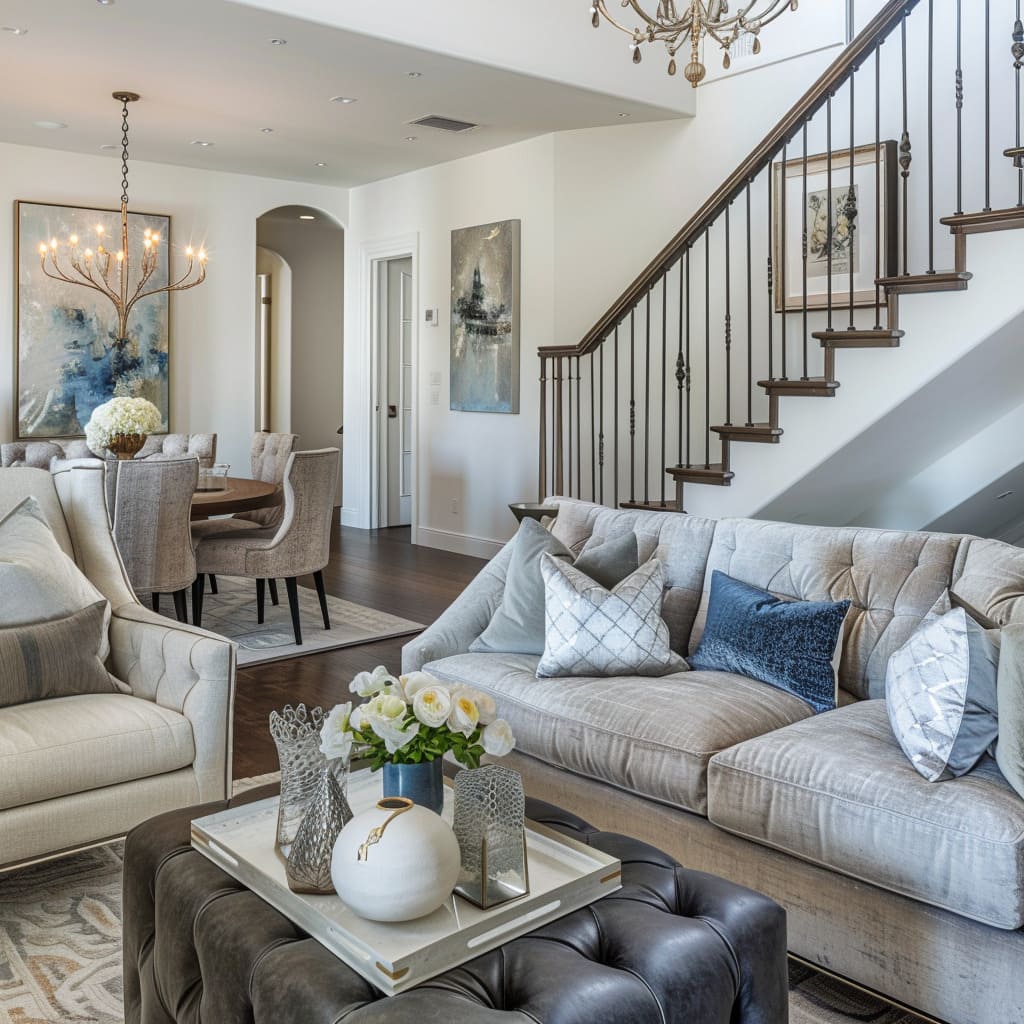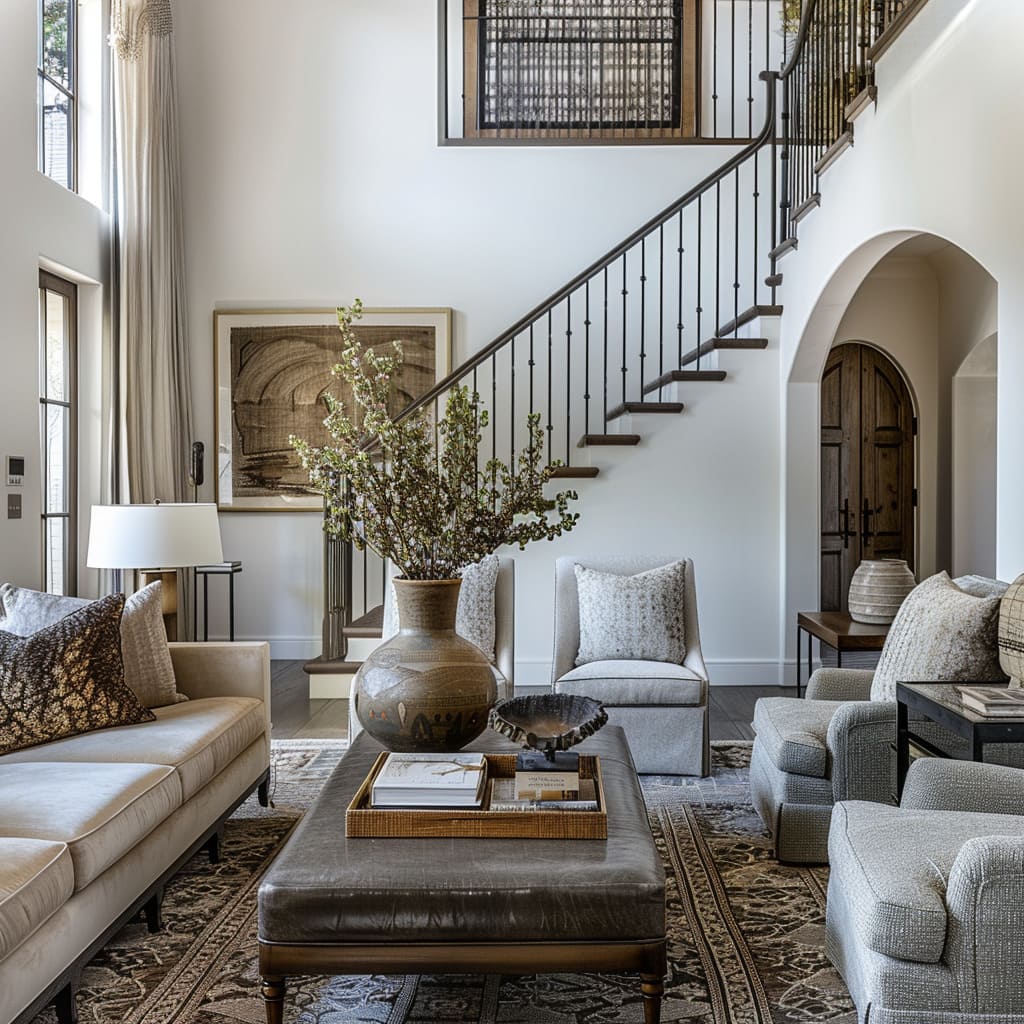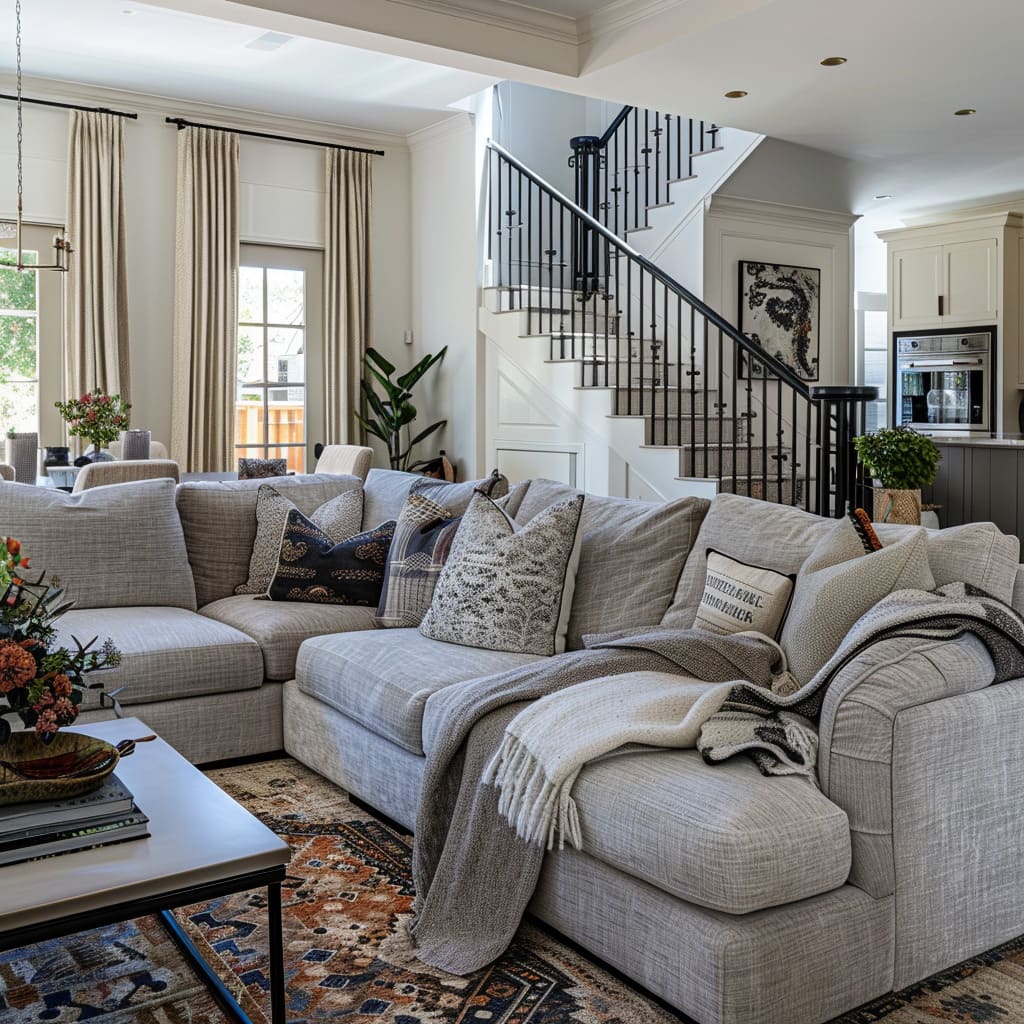In a world where living spaces serve as places of peace and personal expression, the intricate dance of spatial harmony and flow comes to the forefront. This article explores the nuanced craft of interior design, where the strategic allocation of space and the creation of a seamless flow not only enhance the aesthetic appeal of a home but also its livability.
We delve into the art of arranging living environments in a way that promotes ease of movement, visual coherence, and a profound sense of balance. Through examining the principles of selective space allocation, the subtleties of effortless flow, and the impact of structured layouts, we set the stage for a deeper appreciation of the invisible threads that stitch together a harmonious living space.
Spatial Harmony and Flow
The artful allocation of space and the creation of flow are paramount. This section delves into the subtle yet significant ways designers ensure each room facilitates movement and interaction.
From intentional placement of each piece to the effortless flow that guides the visitor through the space, these characteristics define the invisible yet tangible threads that weave a harmonious spatial experience. Selective Space Allocation In these living spaces, each item is thoughtfully placed to ensure movement around the room is unobstructed.
Furniture does not crowd the room but instead complements the space it occupies. The strategic positioning of chairs and sofas not only optimizes the area for walking but also for the visual flow, creating clear sightlines throughout the space.
The distances between furniture pieces are calculated to provide a balance between accessibility and openness, contributing to the overall feeling of spaciousness.
Effortless Flow The unspoken flow that guides an individual through the room is the result of meticulous planning. This flow is made tangible by the pathways laid out by rugs that subtly direct traffic without the need for physical dividers.
The arrangement of furniture is thoughtful, with each piece placed to guide the inhabitant naturally to the next point of interest. This effortless navigation through the space contributes to a stress-free and enjoyable living experience.
Structured Layouts The furniture in each room is arranged not only to promote engagement and interaction but also to maintain a visual order that is calming to the senses. Seating is oriented to foster conversational groupings, while maintaining a sense of personal space.
The intentional use of symmetry in the layout contributes to a balanced atmosphere, where each item seems to have found its rightful place. The careful consideration of sightlines and movement patterns means that each seating area feels both inviting and integral to the design.
Seamless Transitions As one moves from one area to the next, the transitions are designed to be seamless, enhancing the sense of a unified space. This is achieved through the consistent use of design elements such as color schemes and material finishes that carry through from room to room.
The continuity of style from the living area to the dining space, for instance, is smooth and almost imperceptible, enabling a coherent experience that is both practical and aesthetically pleasing. Smart Use of Corners The design makes intelligent use of corners, turning areas that could easily become dead space into functional or decorative assets.
A corner might feature a well-placed piece of art, a comfortable chair, or a plant, all of which add to the room’s functionality or aesthetic appeal. The effective use of corners demonstrates a comprehensive approach to design that considers every inch of the room, ensuring that each area is both beautiful and useful.
Visual and Sensory Balance
Striking a balance in interior design is not only about the visual appeal but also involves engaging the senses. The curated choices in color, textiles, and the room’s tactile qualities contribute to a well-rounded sensory experience.
Explore how varied textile use, intricate trim work, and the strategic use of colors and patterns come together to create a visual and sensory equilibrium.
Varied Textile Use In the carefully composed interiors, a wide array of textiles adds a tactile quality that is both seen and felt. The softness of plush cushions contrasts with the structured firmness of upholstery, engaging the sense of touch.
Accents such as throw pillows offer not only comfort but also serve as a canvas for varied patterns and hues, contributing to the room’s layered depth. This tactile variety encourages one to sit down, relax, and truly engage with the space.
Careful Color Coordination The chosen color palette within these spaces is no accident; it is a curated selection that accentuates the architecture and design features. Walls serve as the backdrop for a symphony of colors expressed through furniture and decor.
Even the hues of book spines are in harmony with the room, contributing to a comprehensive color story that is both soothing and sophisticated. Discrete Color Pops Strategically placed objects provide small but impactful pops of color that catch the eye without dominating the scene.
The subtlety of these hues—seen in vases, books, and artwork—enhances without distracting, providing a visual pause that is refreshing in its restraint. This controlled approach to color ensures that the space remains cohesive while still offering dynamic visual interest.
Selective Use of Pattern Patterns are used with intention, echoing the room’s overarching design narrative. Whether found on an accent pillow or a rug, these patterns are selected to complement rather than compete with the space’s geometry and form.
They serve to anchor the furniture to the room, creating a grounded and well-considered aesthetic that resonates with subtlety and refinement. Intricate Molding and Trim Work The attention to detail is manifest in the meticulous trim and molding work, which frames rooms and highlights the structural beauty of the space.
This woodworking craftsmanship acts as the jewelry of the room—subtle yet splendid. It underscores the thoughtful design process that values not only the broad strokes of style but also the minute accents that give a room character.
Intelligent Use of Fabrics The fabrics selected for the space do more than just add beauty; they are a testament to a design that values longevity and maintenance. From the choice of a rug that must endure foot traffic to the selection of a sofa fabric that invites relaxation, each material is chosen with an eye for both aesthetic appeal and practical living.
This approach ensures that the space remains as inviting and comfortable years from now as it does today.
Design Finesse and Detailing
It’s the attention to detail that often separates a good design from a great one. In this section, we look at the elements of finesse and precision that elevate a space.
From the creation of intentional focal points to the addition of artisan pieces, these characteristics underscore the meticulous approach to creating a sophisticated and thoughtful environment.
Intentional Focal Points Each room features carefully selected focal points that command attention and draw the eye purposefully. This could be a striking piece of furniture that stands out due to its size, color, or design, or an art piece that acts as a visual anchor, imbuing the space with a sense of purpose and direction.
These focal points are situated in such a way that they become the centerpieces of their respective areas, offering a visual pause in the otherwise harmonious decor.
Deliberate Accessorizing Accessories are not mere afterthoughts; they are key elements chosen to complement and complete the space. From a strategically placed vase that adds a subtle curvature to the room’s angles, to a stack of books that provides both a color accent and a point of interest, each accessory contributes to the story the space tells.
The selection is always understated, ensuring that each piece feels integrated into the overall design rather than imposing its presence.
Accentuation of Height and Volume The design takes full advantage of the room’s architecture, using the height and volume to create an expansive atmosphere. High-placed art and vertically oriented decorative items draw the gaze upward, amplifying the sense of space.
Furniture does not overpower but fits comfortably within the room, its placement and size enhancing the dimensions of the area rather than challenging them. Expertly Chosen Artisan Pieces Hand-crafted pieces by skilled artisans are integrated into these spaces, providing uniqueness and a story behind each item.
Whether it’s a hand-thrown vase, a custom-crafted table, or a handwoven textile, these elements bring an irreplaceable authenticity and charm to the space. They reflect a connoisseur’s appreciation for the irreplicable touch of the human hand, standing as testaments to craft and creativity.
Intriguing Visual Lines The design plays with lines to create interest and movement within the space. The eye follows the elegant sweep of a staircase railing, the clean horizontal lines of a bookshelf, or the deliberate contours of a uniquely shaped piece of furniture.
These lines act as silent cues that guide one’s gaze through the space, creating a visual dance that is both rhythmic and engaging. The interplay of lines serves to organize the space while also adding to its aesthetic appeal.
Personalization and Intimacy
A space becomes a home when it reflects the personal narratives of those who inhabit it. This section highlights how the selective display of personal items and the creation of intimate spaces contribute to the overall narrative of a home, imparting warmth and personality to the interiors.
Selective Display of Personal Items In these living spaces, personal items are displayed with a discerning eye, allowing for individuality without excess. Small clusters of meaningful objects, perhaps a set of vintage decanters or a family heirloom, are arranged to invite interest without creating a sense of clutter.
These personal touches are subtly integrated into the broader design, ensuring that the individual’s personality shines through in a way that complements the surrounding aesthetic.
Creation of Intimate Spaces Although the rooms are spacious and open, intimate spaces are carved out with strategic furniture placement and decor choices. A cozy armchair positioned by a window with a view, or a small table set with a pair of comfortable chairs, creates a private nook for reflection or one-on-one conversations.
These areas provide a retreat within the larger room, offering a haven for quieter moments.
Cultivated Aesthetic Cohesion The design of each room is a masterful blend of various elements, all contributing to a cohesive visual narrative. The consistency of the design language, from the furniture styles to the color palette, creates a seamless experience that feels intentional and expertly curated.
Wall treatments and flooring options are selected not just for their individual appeal, but for how they unite the various components of the room, creating a harmonious environment that is both inviting and aesthetically unified.
Harmony in Personal Expression The balance between design and personal expression is carefully maintained, allowing for rooms that feel both personalized and professionally composed. The artwork on the walls, the placement of books, and even the choice of decorative bowls or candles, are all reflections of the inhabitant’s tastes, but selected and positioned to maintain the integrity of the design theme.
This creates an environment that feels both intimate and stylish, a true representation of the dweller’s character within a sophisticated framework.
Aesthetic and Functional Integration
The confluence of aesthetic appeal and practical functionality forms the backbone of intelligent design. This section explores how each element within a space is not only pleasing to the eye but also serves a distinct purpose, embodying the fusion of form and function while maintaining a sense of understated elegance.
Concealed Functionality In these designs, functionality is deftly woven into the aesthetic, such that the utility of an item is as much a part of its beauty as its form. Lamps blend into the decor with bases that echo the room’s color scheme and shades that contribute to the atmosphere, while storage solutions are discreetly integrated into side tables and shelves.
These functional pieces enhance the space without disrupting the visual flow, embodying a design that respects both utility and elegance.
Fusion of Form and Function The furniture and decor are testaments to the philosophy that beauty and utility should coexist seamlessly. Seating is not only aesthetically pleasing but invites relaxation and comfort, while tables provide ample surface without appearing cumbersome.
The design reflects an understanding that objects in the home are not merely to be observed but experienced and interacted with on a daily basis.
Quiet Sophistication There’s a subtle opulence in the details — the soft sheen on a throw pillow, the understated pattern on a rug — that suggests a refined taste without the need for ostentation. This sophistication is evident in the simplicity of a well-crafted vase or the understated design of a coffee table book arrangement.
It’s a sophistication that whispers rather than shouts, offering a serene backdrop to life within its walls.
Refined Proportionality The sense of balance in these rooms is no accident; it is the result of careful consideration of scale and proportion. Furnishings relate to each other in size and placement, ensuring that no single piece overwhelms the others.
The spacing between objects is generous, allowing each item to ‘breathe’ and the eye to move comfortably around the space. The harmony of proportion contributes to a sense of order and tranquility.
Harmonious Integration The integration of aesthetics and functionality speaks to a sophisticated understanding of daily life within a space. Items are chosen not only for the immediate visual appeal they provide upon entering a room but also for the lasting satisfaction they offer through daily use.
This harmonious integration ensures that the space is as comfortable as it is visually compelling, with every item earning its place both in the moment and over time.
Cohesion and Consistency
Achieving a consistent theme throughout a space is crucial for crafting a coherent design story. This section examines the subtle art of maintaining a consistent aesthetic across different areas and elements, ensuring that every piece contributes to the overall style and feel of the space.
Consistent Aesthetic Throughout the space, there is a steadfast adherence to a chosen aesthetic that reflects a singular vision of style and comfort. This consistent theme is visible in the congruent furniture styles that speak the same design language, from the curvature of the chairs to the selection of the light fixtures.
The continuity of this design vision ensures that each room complements the next, resulting in a living space that feels well-conceived from every angle.
Uninterrupted Surfaces The surfaces throughout these spaces are kept clear, save for a few carefully chosen objects, allowing the beauty of the material, whether it be polished wood or cool marble, to stand out. This minimalistic approach to styling surfaces ensures that the space never feels overwhelmed by belongings and that each chosen piece on display, whether a bowl or a book, has the presence it deserves.
Controlled Use of Glass and Mirrors Glass and mirrors are employed strategically to open up the space, multiplying the natural light and giving rooms a more expansive feel. Mirrored surfaces are placed to catch light and views, while glass is used in tabletops and decor to provide a visual lightness.
These reflective elements are balanced such that they amplify the space without creating visual confusion.
A Sense of Calm The design induces tranquility, not through emptiness but through the deliberate choice and placement of each item. There’s a rhythmic quality to the way the furniture is laid out, a softness in the color palette, and a restraint in accessorizing that together promote a peaceful atmosphere.
The result is a space that serves as a sanctuary from the fast pace of the outside world, providing a restful environment where one can unwind in comfort.
Seamless Visual Narrative The design narrative is seamless, with each element reinforcing the next. This is achieved through repeated motifs, a consistent color palette, or the use of similar textures across different rooms.
Such attention to detail ensures that the space feels cohesive, with no single element disrupting the visual story being told. It’s a testament to a design approach that values the overall effect over the individual statement.
Elements of Nature and Comfort
Integrating natural elements and prioritizing comfort are key strategies in creating welcoming spaces. This section celebrates the strategic use of plant life and the careful curation of items that serve to comfort and welcome, fostering an environment where one can relax and feel at ease.
Curated Visual Comfort The elements within these spaces are chosen to appeal to the senses and invite relaxation. Soft textiles invite touch, while the choice of calming colors appeals to the eye.
The lighting is designed to cast a warm glow, enhancing the inviting nature of the space. Furniture offers a visual softness with its rounded edges and plush fabrics, which encourage one to linger and relax.
The overall atmosphere is one of warmth and comfort, making it an ideal retreat.
Strategic Use of Plant Life Greenery is not just a visual element but a vital component that infuses the space with vitality and a breath of fresh air. Plants are positioned to create a natural rhythm within the room, often serving as organic sculptures that enliven corners or soften architectural lines.
They are selected not just for their aesthetic but also for their ability to enhance the room’s air quality, bringing a touch of nature’s own design indoors.
Harmonious with Nature The use of natural elements extends beyond mere decoration; it is integral to creating a space that feels grounded and connected to the natural world. Wood grains are celebrated for their organic patterns, stone surfaces bring the solidity of the earth indoors, and natural fibers in textiles remind one of the textures found in nature.
This harmonious relationship with natural elements reinforces the comfort and tranquility of the space.
Comfort in Details Comfort is also found in the small, tactile details: the smoothness of a polished stone countertop, the soft give of a luxurious carpet underfoot, or the gentle curve of a wooden armrest. These details might be subtle, but they contribute significantly to the overall sense of well-being within the space.
They reflect an understanding that comfort is multi-sensory and that beauty lies in the details that engage all the senses.
Organic Shapes and Lines The furnishings and decor often feature organic shapes and lines that echo those found in nature, further enhancing the connection to the outdoors. Curved back chairs, round tables, and flowing patterns in the fabrics work together to soften the interior and create a more naturalistic, comforting environment.
These elements, inspired by the outside world, help to create a serene and restful space within the home.
As we conclude our exploration of the intricate interplay between design elements and living spaces, it becomes evident that the true essence of a well-designed home transcends mere visual appeal. It embodies a meticulous blend of form, function, and personal narrative, creating environments that not only please the eye but also resonate with the soul.
The thoughtful integration of nature, comfort, and personal touches ensures that these spaces are not just structures but reflections of the inhabitants’ personalities and sanctuaries of well-being. In the end, the mastery of interior design lies not in the grand gestures but in the nuanced details and the seamless fusion of aesthetics and everyday life, crafting spaces that are as functional as they are beautiful, and as personal as they are universally inviting.

